
Testing Accommodations for Students with
Disabilities
Policy and Tools to Guide Decision-Making and
Implementation
February 2018
(Updated August 2023)
THE UNIVERSITY OF THE STATE OF NEW YORK
Regents of The University
LESTER W. YOUNG, JR., Chancellor, B.S., M.S., Ed.D. ....................................... Beechhurst
J
OSEPHINE VICTORIA FINN, Vice Chancellor B.A., J.D. ...................................... Monticello
R
OGER TILLES, B.A., J.D. ..................................................................................... Manhasset
C
HRISTINE D. CEA, B.A., M.A., Ph.D. ............................................................... Staten Island
W
ADE S. NORWOOD, B.A. .................................................................................. Rochester
K
ATHLEEN M. CASHIN, B.S., M.S., Ed.D. ......................................................... Brooklyn
J
AMES E. COTTRELL, B.S., M.D. .......................................................................... New York
J
UDITH CHIN, B.S., M.S. in Ed. ........................................................................... Little Neck
C
ATHERINE COLLINS, R.N., N.P., B.S., M.S. in Ed., Ed.D. .............................. Buffalo
E
LIZABETH S. HAKANSON, A.S., B.A., M.A., C.A.S. ........................................ Syracuse
L
UIS O. REYES, B.A., M.A., Ph.D. ....................................................................... New York
S
USAN W. MITTLER, B.S., M.S. ........................................................................... Ithaca
F
RANCES G. WILLS, B.A., M.A., M.Ed., C.A.S., Ph.D. ...................................... Ossining
A
RAMINA VEGA FERRER, B.A., M.S. in Ed., Ph.D. ........................................... Bronx
S
HINO TANIKAWA, B.A., M.S. ............................................................................ Manhattan
R
OGER P. CATANIA, B.A., M.A., M.S., C.A.S., Ph.D. ....................................... Saranac Lake
ADRIAN I. HALE, A.S., B.A. ................................................................................ Rochester
Commissioner of Education and President of The University
BETTY A. ROSA, B.A., M.S. in Ed., M.S. in Ed., M.Ed., Ed.D.
Senor Deputy Commissioner, Education Policy
DR. JAMES N. BALDWIN
Deputy Commissioner, P-12 Instructional Support
ANGELIQUE JOHNSON-DINGLE
Assistant Commissioner, Office of Special Education
CHRISTOPHER SURIANO
The State Education Department does not discriminate on the basis of race, creed, color, national origin,
religion, age, sex, military, marital status, familial status, domestic violence victim status, carrier status,
disability, genetic predisposition, sexual orientation and criminal record in its recruitment, educational
programs, services, and activities. NYSED has adopted a web accessibility policy, and publications designed
for distribution can be made available in an accessible format upon request. Inquiries regarding this policy
of nondiscrimination should be directed to the Office of Human Resources Management, Room 528 EB,
Education Building, Albany, New York 12234.

Table of Contents
Introduction ................................................................................................................................ 1
Section I: Federal and State Requirements on Testing Accommodations ........................... 2
Section II: Learn About Testing Accommodations ................................................................. 5
Testing Accommodations and Testing Modifications.................................................................... 5
Computer-Based Testing Tools and Accommodations Features ................................................. 6
New York State Testing Program ................................................................................................. 6
Section III: Recommending Appropriate Testing Accommodations ..................................... 9
Who is Involved in Decision-Making? .......................................................................................... 9
Consider Student Characteristics and Needs ............................................................................... 11
Align Testing Accommodations with Instructional Accommodations ............................................ 12
Documentation of Testing Accommodations ................................................................................ 13
Students Who Incur Disabilities Shortly Before Test Administration............................................. 15
Section IV: Implementing Testing Accommodations .............................................................. 17
Planning and Preparation for Testing ........................................................................................... 17
Training and Professional Development ....................................................................................... 18
Additional Considerations for Professional Development ............................................................. 19
Additional Resources ................................................................................................................ 21
References .................................................................................................................................. 22
Appendices
• Appendix A: Testing Accommodations Questions and Answers
• Appendix B: Testing Accommodations Dos and Don’ts
• Appendix C: Examples of Student Characteristics and Possible Testing
Accommodations
• Appendix D: Examples of Testing Accommodations for Special Populations: Blind or
Visually Impaired
• Appendix E: Examples of Testing Accommodations for Special Populations: Deaf or
Hard of Hearing
• Appendix F: Recommending and Administering Tests Read
• Appendix G: Procedures for the Use of a Scribe
• Appendix H: Procedures for Multiple Day Administration of State Assessments

1
Introduction
Many students with disabilities will require testing accommodations in order to
participate in testing programs on an equal basis with their nondisabled peers. Such
accommodations provide students with the ability to demonstrate skills and attainment of
knowledge without being limited or unfairly restricted due to the effects of a disability.
This manual provides information and tools to assist Committees on Special
Education (CSEs) and Section 504 Committees in making appropriate decisions for
determining needed testing accommodations for individual students with disabilities. The
manual also provides policy and guidelines for documenting and implementing testing
accommodations for classroom, district-wide and State assessments. This document is
intended to be used in conjunction with the School Administrator’s Manuals
(http://www.nysed.gov/state-assessment/test-manuals) for all assessments and
examinations across the New York State Testing Program.
Please contact the New York State Education Department’s Office of Special
Education Policy Unit at 518-473-2878 or your Special Education Quality Assurance
(SEQA) Regional Office listed in the Additional Information section of this manual if you
have any questions regarding testing accommodations.

2
Section I: Federal and State Requirements
for Testing Accommodations
As required under IDEA, all students with disabilities must be included in all
general State and district-wide assessment programs, including assessments required
under the Every Student Succeeds Act (ESSA), with appropriate accommodations and
alternate assessments where necessary and as indicated in their respective
individualized education programs (IEPs). IDEA Section (612)(a)(16) also requires the
State (or in the case of district-wide assessments, the local educational agency) to
develop guidelines for the provision of appropriate testing accommodations and, to the
extent feasible, to use universal design principles in developing and administering
assessments.
As part of the student’s IEP, the Committee on Special Education (CSE) must
include a statement of any accommodations that are necessary to measure the academic
achievement and functional performance of the student on statewide and district-wide
assessments. If the CSE determines that the student is not able to participate in general
State and/or district-wide assessments, the IEP must indicate why the State and/or
district-wide assessment(s) is not appropriate for the student and why the alternate
assessment selected is appropriate.
The rights and responsibilities relating to test access and accommodations at the
elementary and secondary school levels are also addressed in Parts 100 and 200 of the
Regulations of the Commissioner of Education (Title 8 of the New York Code of Rules
and Regulations). These regulations include the following:
• Section 100.2(g) indicates that the Commissioner may approve satisfactory
alternative testing procedures for all tests defined in section 100.1 for students
identified by the CSE as having a disability. The alternative testing procedures
employed shall be based upon a student’s individual needs and the type of
assessment administered. School districts and nonpublic schools shall report
the use of alternative testing procedures to the Department on a form and at a
time prescribed by the Commissioner.
• Section 100.2(m) outlines the provision for Public Reporting Requirements
including State and local report card requirements and comprehensive
assessment report by nonpublic schools.
• Section 100.2(s)(1) requires that students with disabilities have access to the
full range of programs and services set forth in the Part 100 Regulations to the
extent that such programs and services are appropriate for such students'
special education needs.
3
• Section 100.2(s)(2) requires that instructional techniques and materials used
by schools be modified to the extent appropriate to provide the opportunity for
students with disabilities to meet diploma requirements. At each annual review
of a student's IEP, the CSE shall consider the appropriateness of such
modifications.
• Section 200.2(b)(11)(iii) requires that each board of education or board of
trustees adopt written policy that establishes administrative practices and
procedures that ensure that the chairperson of the committee on special
education designates for each student one, or as appropriate, more than one
professional employee of the school district with knowledge of the student’s
disability and education program to, prior to the implementation of the IEP,
inform each regular education teacher, special education teacher, related
service provider, other service provider, supplementary school personnel, as
defined in section 200.1(hh) of this Part, and other provider and support staff
person of his or her responsibility to implement the recommendations on a
student’s IEP, including the responsibility to provide specific accommodations,
program modifications, supports and/or services for the student in accordance
with the IEP.
• Section 200.2(b)(13) requires that each board of education or board of trustees
adopt written policy that establishes administrative practices and procedures
that describe the guidelines for the provision of appropriate accommodations
necessary to measure the academic achievement and functional performance
of the student in the administration of district-wide assessments.
• Section 200.4(d)(2)(vi) requires that the IEP provide a statement of any
individual testing accommodations to be used consistently by the student in the
recommended educational program and in the administration of district-wide
assessments of student achievement and, in accordance with Department
policy, State assessments of student achievement that are necessary to
measure the academic achievement and functional performance of the student.
• Section 200.4(d)(2)(vii) requires that if the student will participate in an alternate
assessment on a particular State or district-wide assessment of student
achievement, the IEP shall provide a statement of why the student cannot
participate in the regular assessment and why the particular alternate
assessment selected is appropriate for the student.
• Section 200.4(d)(2)(v)(b)(6) requires that the recommended programs and
services in a student’s IEP indicate any assistive technology devices or
services needed for the student to benefit from education.
• Section 200.4(e)(3)(iii) requires that the school district shall ensure that the
recommendations on a student’s IEP, including changes to the IEP made
pursuant to subdivision (g) of this section, are implemented, including but not
4
limited to ensuring that each regular education teacher, special education
teacher, related service provider, other service provider, supplementary school
personnel as defined in section 200.1(hh) of this Part, and other provider and
support staff person has been informed, prior to the implementation of the IEP,
of his or her responsibility to implement the recommendations on the student's
IEP, including the responsibility to provide specific accommodations, program
modifications, supports and/or services for the student in accordance with the
IEP.
• Section 200.4(f)(2)(iv) requires that, during an annual review of a student’s IEP,
if appropriate, the IEP must be revised to address matters including a student’s
need for test accommodations and/or modifications and the student’s need for
a particular device or service (including an intervention, accommodation or
other program) in consideration of the special factors contained in paragraph
(d)(3) of this section in order for the student to receive a free appropriate public
education.
Students with disabilities must have access to and participate in the general
education curriculum and in courses that will prepare them to take and pass the required
examinations. As determined by the CSE and indicated in the student’s IEP, students
with disabilities must be provided the necessary services and supports, supplementary
aids and services, and accommodations to participate and make progress in the general
education curriculum. This opportunity must be available to students regardless of their
educational placement (public school district, charter schools, BOCES, State-approved
private school, State-operated and State-supported school or Special Act School District).

5
Section II: Learn About Testing
Accommodations
Testing accommodations are changes in testing materials or procedures
that enable students to participate in assessments in a way that assesses abilities rather
than disabilities
1
. The purpose of testing accommodations is to enable students with
disabilities to participate in assessment programs on an equal basis with their
nondisabled peers. Testing accommodations provide an opportunity for students with
disabilities to demonstrate skills and attainment of knowledge without being limited or
unfairly restricted due to the effects of a disability. Testing accommodations promote the
access of students with disabilities to assessment programs, as well as to more
challenging courses and programs. The student’s individual needs must drive the
recommendation for testing accommodations, and testing accommodations should alter
the standard administration of the test to the least extent possible.
Testing Accommodations and Testing Modifications
Testing accommodations remove obstacles to the test-taking process that are
presented by the disability without reducing expectations for learning. The categories of
testing accommodations most frequently required by students, as indicated in their
IEPs/Section 504 accommodations plans (504 plans) are:
• flexibility in scheduling/timing;
• flexibility in the setting used for the administration of assessments;
• changes in the method of presentation; and
• changes in the method of response.
Testing modifications are changes made to the testing process or to the content
of the assessment itself that may change, lower, or reduce learning expectations. Testing
modifications may also alter the underlying construct of the assessment. Examples of
testing modifications that reduce expectations for learning and affect the construct of the
test include:
• simplification, clarification, or explanation of test questions/items;
• use of spell-checking devices on a test of the student's spelling skills; and
• use of a calculator on a test of the student's computational skills.
1
National Center on Education Outcomes, “Accommodations for Students with Disabilities”
(https://osepideasthatwork.org/find-a-resource/special-topic-area-accommodations-students-disabilities).

6
When making decisions regarding appropriate testing accommodations for an individual
student with a disability, it is critical that CSEs and Section 504 Committees consider the
distinction between accommodations and modifications. It is also important for the CSE
or Section 504 Committee to be familiar with the purpose and construct of the tests
administered because certain accommodations may become modifications, depending
on the purpose of the test.
Computer-Based Testing Tools and Accommodations Features
Computer-Based Testing (CBT) Tools. CBT delivery systems, such as those
used by all schools with the New York State Alternate Assessment (NYSAA) and by some
schools with the Grades 3-8 ELA and Mathematics Tests, often include tools that are
generally available to all test takers and aid the students in accessing the online test
materials. Features such as answer eliminator, zoom, and line reader are embedded in
the testing platform of some computer-based testing environments and may be selected
by any student during testing. It is not necessary for a CBT tool that is available to all test
takers to be identified as a testing accommodation on a student’s IEP.
CBT Accommodations Features. CBT delivery systems often also include
accommodations features that may help individual students with disabilities to better
access the test materials in an online testing environment. With the New York State tests,
such features include answer masking, reverse contrast, and text-to-speech. The use of
CBT accommodations features must be listed as testing accommodations in the student’s
IEP and must be activated for the student by the school’s testing coordinator prior to the
first day of testing.
For both CBT tools and accommodations features, students should be given
practice that enables them to become familiar with the use of specific CBT tools and
accommodations features prior to the students accessing them during an actual test. Use
of a CBT tool or accommodations feature during State testing without sufficient practice
beforehand may have a negative effect on a student’s test performance. NYSED’s Office
of State Assessment provides additional information on CBT tools and CBT
accommodations features specific to NYSAA (http://www.nysed.gov/state-
assessment/new-york-state-alternate-assessment) and New York State’s Grades 3-8
English Language Arts (ELA) and Mathematics Tests (http://www.nysed.gov/state-
assessment/test-manuals).
New York State Testing Program
The New York State Testing Program is designed to evaluate the implementation
of New York State’s Learning Standards at the student, school, district, and State levels.
In carrying out its responsibilities, the Office of State Assessment develops and
administers tests that are aligned with the New York State Learning Standards, and are
consistent with State and federal mandates.

7
• Elementary- and Intermediate-Level Assessments: Assessments in English
Language Arts (ELA) and mathematics are administered annually to students
in Grades 3-8, and assessments in science are administered in Grade 4 and
Grade 8.
• Secondary-Level Examinations: Regents Exams are administered at the
secondary level and are designed to measure the achievement of students who
have had instruction based on curriculum aligned with the commencement-
level learning standards. In order to graduate through a specific Pathway, such
as Career and Technical Education (CTE), some students may participate in
an industry-based technical assessment. Additional information on the Multiple
Pathways to graduation, including required assessments, visit NYSED’s Office
of Standards and Instruction webpage (http://www.nysed.gov/curriculum-
instruction/multiple-pathways).
• The New York State Alternate Assessment (NYSAA): The NYSAA
measures attainment of the State’s learning standards across multiple subject
areas in Grades 3-8 and high school for all students determined to have severe
cognitive disabilities.
• English Language Proficiency Assessments: There are two assessments
in New York State in the area of English Language Proficiency. The purpose
of the New York State Identification Test for English Language Learners
(NYSITELL) is to assess the English language proficiency level of new students
whose home or primary language is other than English. A student’s score on
the NYSITELL will determine if he or she is entitled to receive English
Language Learner (ELL) services and will determine the level of English
language support and the level of home language instruction for students in
bilingual education programs. The New York State English as a Second
Language Achievement Test (NYSESLAT) is designed to annually assess the
English language proficiency of all English Language Learners/Multilingual
Learners (ELLs/MLLs) enrolled in Grades K–12 in New York State schools. The
test provides the State and schools with important information about the
English language development of ELLs/MLLs, and is part of the State’s
compliance with federal laws that mandate the annual assessment and
monitoring of the English language proficiency of all ELLs/MLLs.
All State assessments and examinations will serve as important measures of
student progress. Testing accommodations for State and local assessments must be
provided as documented in a student’s IEP/504 plan and in accordance with Department
guidelines. However, the use of testing accommodations allowable for CTE industry-
based assessments, and the types of testing accommodations provided, is determined
by the entities creating those assessments.

8
In order to make informed, appropriate recommendations on testing
accommodations for individual students, members of the CSE/Section 504 Committee
should consider the following information about the tests in which the student will be
expected to participate:
• content areas covered by the test (what standards/skills the test is measuring);
• grade/level tested;
• how the test is administered (duration of the session(s));
• when the test is administered (schedule);
• presentation format (paper-based, performance-based, computer-based);
• response format and nature of test items (multiple choice, short answer, essay);
and
• if a test score is used to inform any decisions about supports/services for
students (e.g., academic intervention services (AIS)).
Information about the content and administration of State assessments can be
found on NYSED’s Office of State Assessment webpage (http://www.nysed.gov/state-
assessment).

9
Section III: Recommending Appropriate
Testing Accommodations
Who is Involved in Decision-Making?
Committee on Special Education (CSE) or Section 504 Committee
For students who have been identified as a student with a disability under one of
the disability categories listed in section 200.1(zz), the CSE
2
is responsible for identifying
and documenting the appropriate testing accommodations for individual students. This
must be documented in the student’s IEP. These determinations are made when the
student is initially determined eligible for special education services and must be reviewed
and, if appropriate, revised at least once each year. For students identified as having a
disability under Section 504 of the Rehabilitation Act, the Section 504 Committee
determines the appropriate testing accommodations for individual students.
Documentation of testing accommodations must be included in the student’s 504 plan.
• Student: Students, when appropriate, are members of the CSE or 504
Committee and may provide valuable information to drive the consideration of
testing accommodations. They can provide information on their strengths and
challenges, as well as feedback on the accommodations they use for
instruction.
• Parents: As members of the CSE or Section 504 Committee, parents
participate in the development, review, and revision of their child’s IEP or 504
plan. Parents bring valuable information to discussions about the need for
testing accommodations. To enable parents to meaningfully participate in
discussions, it is important that they have information about the following:
o the purpose of the tests administered, what they measure and how the
results are used;
o the need and rationale for testing accommodations, where appropriate; and
o the types of testing accommodations and how they are administered.
• General Education Teacher: General education teachers are familiar with
curriculum content and the purpose of State and district-wide assessments and
examinations. Therefore, as a member of the CSE or Section 504 Committee,
the general education teacher has a significant role in the determination and
2
Documentation of testing accommodations is required for preschool students with disabilities as defined
in section 200.1(mm) only if there is an assessment program for nondisabled preschool children. In such
cases, the Committee on Preschool Special Education (CPSE) would be responsible to recommend
appropriate testing accommodations.
10
use of testing accommodations for students with disabilities. Ensuring that
students with disabilities have full access to the programs and services that are
available to their nondisabled peers often requires that general education
teachers, in collaboration with special education teachers, provide appropriate
instructional and testing accommodations. The results of assessments assist
teachers by providing information about what areas to focus instruction to
enable the individual student to achieve the learning standards. The testing
accommodations listed in the student’s IEP/504 plan must be consistently
provided in the classroom. To accomplish this, teachers must be familiar with
the different types of accommodations and how to implement them.
• Special Education Teacher: As a member of the CSE, the special education
teacher plays an important role in providing information on how to match the
specific needs of the student with a disability to appropriate testing
accommodations that will ensure that the student is able to demonstrate his/her
knowledge and skills without being limited or unfairly restricted by his/her
disability. In collaboration with general education teachers and related service
providers, special education teachers assist in recommending and
implementing appropriate instructional accommodations used in the
classroom. These will serve as a link to the types of testing accommodations a
student may need for classroom, State, and district-wide tests.
• School Psychologist and Related Service Providers: School psychologists
and related service providers are often involved in evaluating students with
disabilities to determine their eligibility for special education programs and
services. Additionally, related service providers often work closely with
students with disabilities on specific skills and frequently assess students on
their progress with IEP goals and objectives. These evaluations and
assessments may provide valuable information to inform appropriate
recommendations on testing accommodations tailored to the unique needs of
each student.
• Individual with a Bilingual Extension or Certification as a Teacher of
English to Speakers of Other Languages: When the CSE meets to make
recommendations regarding a student who is an ELL/MLL, the school district
is responsible for ensuring that the CSE include personnel with knowledge of
second language needs and how these needs relate to the student’s disability
(i.e., an individual with a bilingual extension or certification as a teacher of
English to Speakers of Other Languages). When deciding which testing
accommodations a student should receive to address needs related to his/her
disability, the CSE should consider testing accommodations allowed for all
ELLs/MLLs and Former ELLs/MLLs (e.g., extended time, bilingual glossary, or
translation software).

11
School Building Principal
Principals are responsible for ensuring that testing accommodations are fully,
consistently, and appropriately implemented during the administration of local and State
assessments, as specified in each student’s IEP/504 plan to the extent consistent with
State policy. There may be certain circumstances under which a principal may authorize
testing accommodations on State assessments for a student who has recently incurred
an injury or disability shortly before the test (see page 15.) Principals should be familiar
with the policies and procedures included in the School Administrator’s Manuals posted
by the Office of State Assessment (http://www.nysed.gov/state-assessment/test-
manuals/). School district policy should identify the procedure by which principals will
receive information on students’ testing accommodations.
Consider Student Characteristics and Needs
The unique strengths and needs of the student should drive the process of
recommending appropriate testing accommodations. Additionally, those involved in the
decision-making process should consider the types of local and State assessments and
tests in which the student will be expected to participate. When making recommendations
on testing accommodations for individual students, the notion that “more is better” is not
necessarily appropriate. Furthermore, decisions may not be based categorically upon a
student’s classification or placement (e.g., “All students with learning disabilities receive
extended time”). Failing to tailor recommendations to the needs of each student may
result in providing inappropriate accommodations that have a negative effect on test
performance. Appropriate recommendations on testing accommodations should allow the
student meaningful participation in assessments with as much independence as possible.
When developing the student’s IEP/504 plan, the responsibility of the CSE/Section 504
Committee is to recommend testing accommodations that will:
• provide the student access to the assessment program;
• enable the student to demonstrate his/her strengths, knowledge, and skills
without being restricted by a disability; and
• provide an accurate measure of the standards being assessed, so that
appropriate instruction and services can be provided.
When making decisions for individual students, the CSE/Section 504 Committee
should review all available information including:
• recent evaluations;
• classroom observation reports;
• school records; and
• results of classroom, district-wide, and State assessments.
12
Guiding Questions
The following general questions may be used as a first step in determining
appropriate testing accommodations for individual students:
• Is the student able to meaningfully participate in the standard administration of
the assessment?
• In order to participate, does the student need an accommodation in any of the
following aspects of test administration?
o Scheduling/Timing
o Location/Setting
o Presentation
o Response
• To what extent does the student’s disability impede his/her demonstration of
the knowledge required by the test?
• What instructional accommodations, if any, are provided to the student in the
classroom?
• What accommodation(s) focus on removing the obstacles to equal participation
that are a result of the student’s disability?
• What accommodation(s) will facilitate participation that enables the student to
be as independent as possible?
• Will the accommodation reduce learning expectations or change what the test
is intended to measure?
Align Testing Accommodations with Instructional Accommodations
Whenever possible, the instructional accommodations used in the classroom
should be aligned with the testing accommodations provided during assessment. For
example, if a student needs educational materials in large print, they will need a testing
accommodation that provides testing materials in large print. Teachers, parents, and
students can provide important information about instructional accommodations that the
student needs to access and participate in the general education curriculum. Instructional
accommodations must also be discussed at the CSE/Section 504 Committee meeting
and indicated in the student’s IEP/504 plan. Evaluation of the effectiveness of these
accommodations should be reviewed. Instructional accommodations may include, but are
not limited to:

13
• changes in timing and scheduling, such as extended time to complete
assignments;
• changes in setting, such as adaptive furniture or small group instruction;
• changes in the presentation of materials and assignments, such as alternative
formats, decreased length of assignments and/or fewer assignments, breaking
assignment into smaller parts and presenting information in a variety of ways;
and
• changes in method of student’s response, such as use of word processing
software on a computer device or providing answers orally rather than written.
Not all accommodations used during instruction are appropriate for use during State
assessments. Example: The use of word banks for classroom assignments is not allowed
for State assessments.
Please refer to:
Appendix B: Dos and Don’ts When Recommending Testing Accommodations
Appendix C: Examples of Student Characteristics and Possible Testing Accommodations
Appendix D: Examples of Accommodations for Special Populations: Students Who are
Blind or Visually Impaired
Appendix E: Examples of Accommodations for Special Populations: Students Who are
Deaf or Hard of Hearing
Appendix F: Recommending and Administering Tests Read
Appendix J: Allowable Accommodations for the New York State Testing Program
Documentation of Testing Accommodations
The IEP/504 plan must indicate the recommended individual testing
accommodations, if any, to be used consistently by the student:
• in the student’s education program;
• in the administration of district-wide assessments of student achievement,
consistent with school district policy; and
• in the administration of State assessments of student achievement, consistent
with NYSED policy.
Testing accommodations must be clearly stated to ensure that they are
consistently understood by the CSE/Section 504 Committee, school principal, teachers,
paraprofessionals, the student, and the student’s parents. Recommended testing
accommodations must be documented in the student’s IEP (under the section Individual
Testing Accommodations) or 504 plan and must be reviewed annually. Documentation
should include:
14
• Specific testing accommodation(s)
Specific testing accommodations (e.g., use of word processor) should be
indicated, not generic test accommodation categories (e.g., answers
recorded in any manner).
A particular test accommodation may also be needed due to and in
conjunction with the provision of another accommodation. For example,
separate setting may be needed when the student has the use of a scribe.
In such instances, both accommodations must be indicated in the IEP/504
plan, and qualifying conditions would be indicated, as appropriate.
• The conditions or types of tests in which the accommodation must be
provided
The purpose of clarifying the conditions of the test is to ensure that test
accommodations are not provided excessively or when not appropriate to
the purpose or type of test. Such conditions may include the length of the
test, the purpose of the test, presentation of test items, and the method of
response required by the student. It is generally not appropriate to indicate
testing accommodations in a test-specific manner, such as “use of scribe
on the Regents Examination in English.” Additionally, using general
qualifying terms (e.g., “as needed,” “when necessary,” or “when
appropriate”) may lead to confusion or inconsistency in implementation and
should be avoided.
Examples: a student with a motor impairment may need a scribe for tests
requiring extensive writing, such as essay writing, but not for multiple-choice
tests; or a student may need breaks at certain intervals for tests longer than
an hour in length but not for 40-minute classroom tests.
• Any additional implementation recommendations
Such recommendations may include (but are not limited to) the amount of
extended time; duration of breaks; individual or small group when testing in
a separate setting; or specific equipment or assistive technology
appropriate to implement an accommodation.
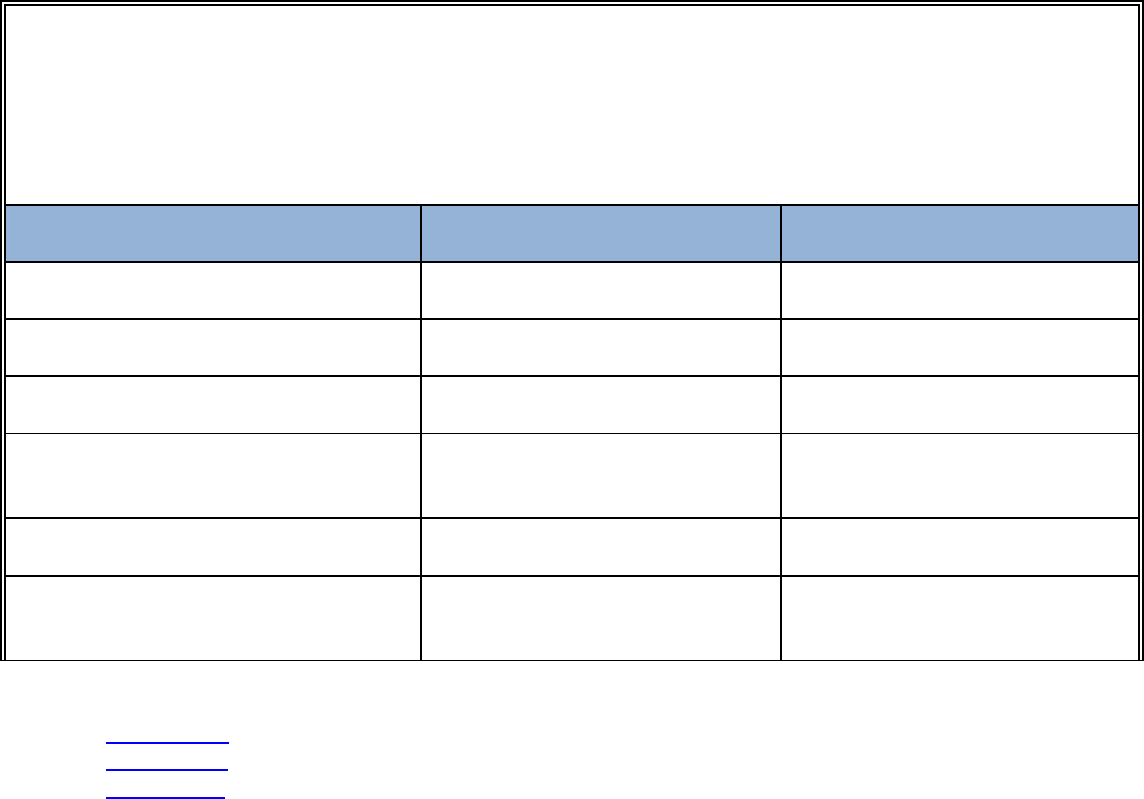
15
The following chart illustrates examples of appropriate documentation of testing
accommodations in an IEP/504 plan:
TESTING ACCOMMODATIONS
The following testing accommodations will be used consistently:
• in the student’s education program;
• in the administration of district-
wide assessments of student achievement consistent with school
district policy; and
• in the administration of State assessments of student achievement, consistent with NYSED policy.
TESTING ACCOMMODATION
TESTING CONDITIONS
IMPLEMENTATION
RECOMMENDATIONS
Extended time
For tests requiring extended
written (essay) responses
Double Time
Use of scribe
For test items requiring
extended writing responses
Student may dictate into a
recording device.
Separate setting
All tests
Small group – quiet with limited
visual distractions
Tests read
For all State and local tests
except those measuring
reading comprehension
This accommodation should be
provided using text-to-speech
software
Breaks
For tests longer than 40
minutes in length
10-minute break every 40
minutes
Tests administered over multiple days
For tests with a standard
administration time greater than
2 hours in length
Testing sessions are not to
exceed 2 hours
Please refer to:
Appendix B: Dos and Don’ts When Recommending Testing Accommodations
Appendix F: Recommending and Administering Tests Read
Appendix J: Allowable Accommodations for the New York State Testing Program
Students Who Incur Disabilities Shortly Before Test Administration
Principals may also provide certain testing accommodations for general education
students who experience the onset of a short-term disability (e.g., incur an injury, such as
a broken arm) or a long-term disability (either cognitive or physical) acquired or diagnosed
within 30 days prior to the administration of State exams. Eligibility for such
accommodations is based on the principal’s professional judgment. The principal may
confer with CSE/Section 504 Committee members, the school physician, or other school
personnel in making such determinations. This authorization for testing accommodations
does not apply to a student who is in the process of being evaluated to determine his or
her eligibility status as a student with a disability, unless the student being evaluated has
also recently incurred an injury or disabling condition that warrants authorization for

16
emergency accommodations. Principals may authorize certain accommodations that will
not significantly change the skills being tested. These accommodations are limited to the
following:
• Extending the time limit for a test
• Administering the test in a special location
• Answers may be recorded in any manner (See Appendix G: Procedures for
the Use of a Scribe)
• Reading a test to the student, only if the student’s vision is impaired
Prior permission need not be obtained from the State Education Department to authorize
these testing accommodations for general education students. However, a report
concerning each such authorization must be sent to the Office of State Assessment via
fax to 518-474-1989. The report must be on school letterhead, signed by the principal,
and must include the following information:
• The student’s NYS Student Identification Number;
• The title of the test, including the grade;
• A brief description of the student’s injury or disability; and
• A list of the accommodations that were authorized by the principal.
If the student is expected to continue to need testing accommodations, the principal
should immediately make the appropriate referral to the CSE or Section 504 Committee
for the development of an IEP or 504 plan, as appropriate.

17
Section IV: Implementing Testing
Accommodations
Once testing accommodations have been considered, recommended, and
documented for individual students, the school must take steps to ensure the testing
accommodations specified in a student's IEP/504 plan are implemented accordingly.
Schools must ensure that:
• copies of the student's IEP are provided, as appropriate, to teachers, service
providers, and others responsible for implementing the IEP; and
• each individual is informed of his or her IEP/504 plan implementation
responsibilities.
Planning and Preparation for Testing
For students whose IEPs/504 plans indicate testing accommodations, building
principals must ensure that testing accommodations are consistently and appropriately
administered for all classroom tests/quizzes, district-wide assessments, and State
assessments. There should be a mechanism in place for communicating the need for
testing accommodations to substitute teachers and test proctors, when necessary.
Careful planning prior to the scheduled testing date will ensure that accommodations are
appropriately implemented as specified in the student’s IEP/504 plan. Among the
considerations in this planning process are identification and training of all individuals
responsible for implementing the testing accommodations and preparation of specialized
materials and/or testing locations.
In order to administer certain testing accommodations, a change in test format may
be necessary. In most cases, changes in the format of tests may be made by the school.
For example, a revised test format is often needed if using text-to-speech software with
paper-based tests, as the test will have to be scanned into a digital format in order to be
used with such software. For State assessments, any reproduction and/or
reformatting of a test booklet, which ordinarily is prohibited, requires the advance
written permission of the Office of State Assessment. A request to make these types
of changes must be submitted by the principal to the Office of State Assessment. This
request must indicate that permission is needed to revise the test format in accordance
with the specifications in the student's IEP/504 plan. The request must also include the
student’s NYS Identification Number, examination title and date(s), and proposed format
revisions. Requests must be faxed to the Office of State Assessment at 518-474-1989 at
least two weeks prior to the first day of the test administration period. The Office of State
Assessment will review the request and issue a response in writing. For additional
guidance on procedures that must be followed when administering specific testing
accommodations, please refer to:

18
Appendix F: Recommending and Administering Tests Read
Appendix G: Procedures for the Use of a Scribe
Appendix H: Procedures for Multiple Day Administration of State Assessments
Appendix J: Allowable Accommodations for the New York State Testing Program
Many computer-based testing platforms allow for certain testing
accommodations to be provided within the testing platform, itself (e.g., text-to-speech).
Such testing accommodations options need to be identified and coded in the computer-
based testing platform prior to testing. Schools must work with the test coordinator to
verify that online testing accommodations are selected for the applicable students before
testing begins.
Training and Professional Development
In order to ensure that decisions are made consistently across districts and across
the State, staff development should be provided that:
• communicates State policy, guidelines, and procedures;
• provides decision-makers with the tools necessary to make appropriate
individualized decisions about students; and
• provides the tools necessary to correctly implement testing accommodations.
All those responsible for developing and implementing the student’s IEP/504 plan
should participate in staff development activities. These include members of the
CSE/Section 504 Committee, teachers, administrators, teaching assistants, and teacher
aides. Professional development and training topics related to testing accommodations
should include:
• Purpose of testing accommodations
• Eligibility
• Documentation
• Types of testing accommodations
• Criteria for making decisions
• Aligning testing accommodations with instructional accommodations
• Implementation of testing accommodations
• Purpose of State assessments
• State policy and guidelines
• Discussing testing accommodations with students
• Instructing students on the use of certain testing accommodations
Assistance and training are available on a variety of topics, including testing
accommodations, through NYSED’s Office of Special Education’s Educational
Partnership (https://osepartnership.org/), a coordinated and cohesive professional
19
development and technical assistance network designed to support and empower
schools and families in improving equity, access, opportunities, and outcomes for
students with disabilities.
Additional Considerations for Implementation
Testing accommodations should not be provided for the first time during a
State examination. It is expected that the student has had adequate experience with
certain testing accommodations prior to using those accommodations on a State test.
This is especially important when using adaptive tools, specialized equipment, or
assistive technology devices or when provided accommodations that involve specific
procedures, such as use of a scribe or tests read aloud.
Testing accommodations must be provided across all placement settings
(special class, general education class, etc.) and are not restricted to the traditional
school year. Students receiving extended school year services or students with
disabilities participating in general education summer school programs must be provided
the testing accommodations on their IEP/504 plan. The school district or BOCES
operating the extended school year or general education summer school program is
responsible for the continued implementation of testing accommodations included in the
student’s IEP/504 plan.
In the cases of diagnostic testing or district-wide screenings, providing
certain accommodations may result in invalid scores, thereby affecting the
student’s identification for subsequent services. For diagnostic testing (e.g., testing
used for the purposes of determining eligibility for special education programs and
services), the manner in which certain procedures or instruments are administered to an
individual student (with and/or without testing accommodations) is at the discretion of the
evaluator since the purpose of the test is diagnostic. Based on section 200.4(b)(6) of the
Regulations of the Commissioner of Education, if an individual assessment is not
conducted under standard conditions, a description of the extent to which it varied from
the standard conditions (e.g., the qualifications of the person administering the test, or
the method of test administration) must be included in the evaluation report. The effect of
certain accommodations on district-wide screening tools (e.g., tests read on tests
measuring decoding, extended time on tests measuring fluency) must also be understood
by individuals involved in administering such tools to students with testing
accommodations documented in an IEP/504 plan.
In some instances, a student may refuse or ask to waive testing
accommodations for a local or State assessment. School officials should remind the
student of the reasons for the specific testing accommodations. However, if such action
is not effective in changing the student’s position, school officials should administer the
test without accommodations and document the incident, notify the parent(s), and
consider the appropriateness of additional counseling or a review of the student’s IEP/504
plan by the CSE/Section 504 Committee. In such cases, if the answer document requires

20
the school to indicate test accommodations provided, the teacher should indicate only
those actually used by the student. Involving the student from the beginning, as
appropriate, in discussions and decisions regarding testing accommodations may help to
avoid such circumstances. Please refer to Appendix I: Sample Student Accommodation
Refusal Form.

21
Additional Resources
The National Center on Educational Outcomes (NCEO) provides national leadership in
designing and building educational assessments and accountability systems that
appropriately monitor educational results for all students, including students with
disabilities and ELLs/MLLs. Additional information on testing accommodations is
available on NCEO’s Accessibility and Accommodations for General Assessments
website (https://nceo.info/Assessments/general_assessment/accessibility-and-
accommodations).
State Education Department Offices
Office of Special Education (see additional contact information below)
(http://www.p12.nysed.gov/specialed/)
518-473-2878
Office of State Assessment (OSA)
(http://www.nysed.gov/state-assessment
518-474-5900
Office of Standards and Instruction
(http://www.nysed.gov/curriculum-instruction
518-474-5922
Information and Reporting Services
(http://www.nysed.gov/information-reporting-services 518-474-7965
New York State Education Department’s Office of Special Education
Central Office
NYS Education Department
Office of Special Education
89 Washington Avenue, Room 309 EB Albany, NY 12234
speced@nysed.gov
518-473-2878
518-473-5387 (fax)
Regional Offices
Special Education Quality Assurance (SEQA) Regional Offices
(http://www.nysed.gov/special-education/special-education-quality-assurance-regional-
offices)
Office of Special Education Educational Partnership
The Educational Partnership
(https://osepartnership.org/)

22
References
Christensen, L., Carver, W., Andesine, J., & Lazarus, S. (2011). Accommodations
manual: How to select, administer, and evaluate the use of accommodations for
instruction and assessment of students with disabilities (3
rd
ed.). Washington, DC:
Assessing Special Education Students State Collaborative on Assessment and Student
Standards, Council of Chief State School Officers.
Shyyan, V., Thurlow, M., Christensen, L., Lazarus, S., Paul, J., and Touchette, B. (2016).
CCSSO accessibility manual: How to select, administer, and evaluate use of accessibility
supports for instruction and assessment of all students. Washington, DC: CCSSO.

Appendix A
i
Testing Accommodations Questions and Answers
RECOMMENDING TESTING ACCOMMODATIONS
1. Is there any limit to the types of testing accommodations that may be included
in a student’s IEP or 504 plan?
No. Based on the student’s needs, a range of testing accommodations may be included
in an IEP or 504 plan.
2. Is there a limit to the amount of extended time a CSE/Section 504 Committee
may recommend for a student with a disability?
No. However, the ability of the student to maintain optimal performance during long
periods of test-taking must be considered when the CSE determines how much extended
time should be provided.
3. How are testing accommodations recommended for students taking the
NYSAA, which is administered in a computer-based testing environment?
A student’s IEP must clearly document all testing accommodations including accessibility
supports that will be provided to the student when participating in the NYSAA. This will
foster appropriate decision-making prior to testing, and it will support consistency in
implementation during testing. The supports that a student requires in instructional
environments may be used to inform decisions on appropriate accessibility features to
document in the student’s IEP. Additionally, school personnel are encouraged to provide
the student opportunities to access practice test items that use accessibility features in
order to inform decision-making and student familiarity regarding the use of these
features. Additional information on the NYSAA, including practice test items, is available
on the Dynamic Learning Maps website (http://dynamiclearningmaps.org/).
4. Is it appropriate to use general qualifying terms when documenting testing
accommodations in a student’s IEP/504 plan, such as “as needed,” “when
appropriate,” or “when necessary”?
No. Documentation should include the conditions or types of tests in which a testing
accommodation is to be provided, as well as any relevant specifications required for
appropriate implementation. Using general qualifying terms without providing additional
implementation specifications may lead to confusion or inconsistency in implementation
and should be avoided. If it is determined that the student needs a particular testing
accommodation for all tests, then qualifying conditions are not indicated or would indicate
“all tests.” For example, if the IEP/504 plan states “use of scribe,” with no testing
conditions specified, this would indicate that the accommodation is to be provided for all
tests regardless of the amount of writing that is required.

Appendix A
ii
5. What is the process for considering and recommending “tests read” for
students with disabilities in the elementary and intermediate grade levels?
Please refer to Appendix F for guidance on appropriately recommending and
documenting this accommodation for students in Grades 3-8.
6. Should “questions read” be indicated as a testing accommodation in the
IEP/504 plan, which would mean that only questions are read to the student?
Generally, no. The passages and multiple-choice items with those questions are
considered part of the question. Therefore, to ensure a common understanding by
teachers, parents, and students, and the appropriate implementation of this
accommodation, the IEP/504 plan should indicate this accommodation using phrasing
such as, “tests read” or “tests read aloud.” School personnel should understand that such
an accommodation includes reading of passages, questions, items, and multiple-choice
responses to the student on tests and quizzes in accordance with the specifications in a
student’s IEP/504 plan.
7. Should the CSE or Section 504 Committee specify in an IEP/504 plan whether
“tests read” should exclude tests of reading comprehension for a high school
student who will be participating in Regents exams or Regents Competency
Tests (RCTs)?
The testing accommodation “tests read” is permissible on all Regents Examinations
(including ELA) and all RCTs (including Reading) for students with disabilities who have
that accommodation documented in an IEP/504 plan. In some cases, the Committee may
determine that this exception is appropriate to the unique needs of an individual student.
8. May a student’s IEP/504 plan indicate that the student reads tests aloud to
himself or herself?
Yes. In order to provide this accommodation to a student, it is likely that the student will
also need testing in a separate location specified in his or her IEP/504 plan.
9. Are text-to-speech, speech-to-text, and word-prediction software programs
allowable testing accommodations on State assessments?
Yes. Text-to-speech, speech-to-text, and word-prediction software programs are
allowable testing accommodations on State assessments at the elementary,
intermediate, and secondary grade levels if documented as a testing accommodation (or
implementation specification for a testing accommodation) in a student’s IEP/504 plan,
as indicated in the chart in Appendix J: Allowable Accommodations across the New York
State Testing Program. When using such software to implement testing
accommodations on State assessments, the student must not have access to any
unauthorized features, such as the internet, a dictionary, or a thesaurus.

Appendix A
iii
Text-to-speech capabilities are embedded within the Grades 3-8 ELA and Mathematics
CBT platform and may be activated prior to testing for a student with a disability if included
in the testing accommodation recommendations in the student’s IEP/504 plan. If a student
is using text-to-speech software as a testing accommodation for a paper-based State
Assessment or Examination, the school must submit to the Office of State Assessment a
request for approval to reformat the test. Please refer to Section IV: Implementing Testing
Accommodations of this document for additional detail on submitting reformatting
requests. For additional information on the use of text-to-speech software to provide the
“tests read” testing accommodation, please refer to Appendix F: Recommending and
Administering “Tests Read.”
Speech-to-text and word prediction software programs are considered to be changes in
the method of response. Changes in the method of response do not require a request to
reformat. A student who uses this technology to implement testing accommodations must
use a school-provided device during State testing. When word processing using word-
prediction or when dictating using speech-to-text software on a State assessment, the
school must print the student’s response and staple the response to the test booklet. If a
student using such accommodations is participating in computer-based State testing, the
student’s exact responses must be entered into the computer-based testing platform by
a test proctor or appropriate school staff.
10. Can a paper test be recommended as a testing accommodation for students
with disabilities who would otherwise be expected to participate in computer-
based State testing?
Yes, if appropriate to the needs of the student and if necessary to implement other testing
accommodations (e.g., use of a human reader to implement “tests read”). If a student with
a disability who would otherwise be participating in computer-based testing is
recommended to use a paper test in accordance with IEP/504 plan recommendations,
the paper version of the test must be requested by contacting the Office of State
Assessment.
11. Is the use of “word banks” an allowable accommodation on State
assessments?
No. For State assessments, the use of a word bank is considered a non-allowed testing
modification. The use of word banks in teacher-made tests would be left up to the
discretion of the student’s teachers, since they know the skills they are intending to
measure and how this would affect the validity of the test.
Only those standardized reference materials specifically permitted or provided by the
Department are allowable for use by students taking State assessments. Word banks are
not authorized reference materials; their availability during the administration of a State
examination may invalidate the student’s test.

Appendix A
iv
12. When may the use of a “spell check device/software” be implemented as an
accommodation on State assessments?
A “spell check device/software” may be used as a testing accommodation on any State
assessment or Regents Examination in accordance with the testing accommodations
recommendations documented in the student’s IEP/504 plan. For students with
disabilities who participate in the Grades 3-8 ELA Tests, the recommendation for this
testing accommodation on all tests (which would include the Grades 3-8 ELA Tests) is
appropriate only for students with disabilities that severely limit their ability to spell words
while writing/typing. A recommendation for a “spell check device/software” as a testing
accommodation for students in grades 3-8 should be informed by evaluative information
indicating that, even after explicit, systematic, and research-based spelling instruction,
the student’s disability precludes or severely limits his/her ability to spell words, including
words at the early stages of spelling skill development.
13. In order to implement certain accommodations, the need for additional
accommodations may need to be recommended. An example is the need for
“separate location” when a student uses a scribe. Does the IEP/504 plan need
to indicate separate location, or can this be provided at the school’s discretion?
The CSE/Section 504 Committee must anticipate such consequences and must indicate
in the IEP/504 plan all such accommodations. Accommodations used in the
administration of State assessments to students with an IEP/504 plan may not be devised
or put into effect outside of the specifications and requirements directly stated in the
student’s IEP/504 plan.
14. What types of calculators are not permitted to be used by students when taking
Regents Examinations?
Under no circumstances may calculators with symbol manipulation be made available to
students taking Regents Examinations. In addition, calculators that can communicate with
other calculators through infrared sensors or any other method of transmission are not
permitted. The use of operating manuals, instruction or formula cards, or other information
concerning the operation of calculators is also not permitted during the examinations.
Additional information on the use of calculators on secondary-level examinations may be
found in the School Administrator’s Manual for Secondary-Level Examinations available
on the Office of State Assessment’s webpage (http://www.nysed.gov/state-
assessment/test-manuals).
15. Are students permitted to have sheets of mathematical formulas for use on
State assessments?
Please refer to the most current School Administrator’s Manuals for elementary-,
intermediate-, and secondary-level examinations available on the Office of State
Assessment’s webpage (http://www.nysed.gov/state-assessment/test-manuals).
Appendix A
v
16. If a student’s handwriting is illegible, can a scribe be used to rewrite the
student’s response?
If indicated in the IEP/504 plan, the student may have a scribe who rewrites the student’s
responses as dictated by the student. Documentation in the IEP/504 plan must state “use
of scribe for rewriting student’s responses as dictated by the student.”
17. What type of accommodations are permitted for a student with a disability who
is unable to independently manipulate objects during science performance
assessments (required labs) due to physical or other impairments?
In general, the types of instructional accommodations provided in the classroom will be
permitted as a testing accommodation if indicated in the IEP/504 plan. This includes the
use of an aide who will manipulate objects as directed by the student. It is especially
important that the student and aide have experience in using this accommodation during
instruction and classroom tests.
18. What types of testing accommodations may be considered for students in
physical education?
Due to the unique nature of physical education, the accommodations that may be
provided to enable students with disabilities to participate in physical education
assessments are also unique. Accommodations can include changes in equipment,
environment, and/or the basic rules. The following are suggestions for physical education
instructional and assessment accommodations for students with disabilities:
• Reduce the size of the playing area
• Reduce the number of participants
• Reduce the time of the task
• Varied size, weight, color of equipment
• Use of brightly colored paint to identify field markings
• Use of cones or markers to indicate field markings
• Field markings may be modified in width
• Use of a beeper ball and/or a localizer to identify bases
• Use of hand signals or teammate shoulder tap to start and stop play
• Allow use of alternative communication methods (e.g., interpreter, picture
board, flash cards, etc.) by student
• Select the court environment with the least noise
• Increase the size of the playing area to allow the student more personal space
and less likelihood of contact
• Provide verbal cues
• Provide pinch runner for games requiring running

Appendix A
vi
IMPLEMENTING TESTING ACCOMMODATIONS
Method of Presentation
19. How is “tests read” administered to students with disabilities as a testing
accommodation on State tests?
Please see Appendix F: Recommending and Administering Tests Read.
20. What are the procedures for the use of text-to-speech programs or audio
playback devices as testing accommodations when administering State
assessments?
Please see Appendix F: Recommending and Administering Tests Read.
21. Is it permissible to read information to a student more than once when State
assessments are being read?
Yes. For a student who has the accommodation of tests read, questions, passages,
and/or directions may be reread to the student, should the student indicate to the reader
the need to have an item re-read or repeated during testing.
22. Is it permissible to simplify questions when State assessments are being read?
No. This is not permissible on State assessments, as it would invalidate the examination.
However, on teacher-made tests or quizzes, the teacher can make a determination as to
whether and the extent to which any clarification may be provided without compromising
test validity. Only clarification or simplification of directions is permitted on State
assessments when required by the IEP/504 plan.
23. Can questions or multiple-choice answer options be deleted on a State
assessment?
No. Individual items or answer options may never be modified or eliminated.
24. Is revised test format (other than Braille or large type) an allowable
accommodation on State assessments? If so, who is responsible for revising
the test format?
If the student’s IEP/504 plan requires a revised test format on State assessments,
the principal is responsible for implementing this accommodation. Changes in test
format, such as only one item on a page, increased spacing between items, changing
size or shape or location of space for answers, etc., can be made by the school. A request
to make these types of format changes must be submitted to and approved by the Office
of State Assessment. Information on the requirements for submitting reformatting
Appendix A
vii
requests is available in Section IV: Implementing Testing Accommodations of this
document.
25. May teachers or test proctors implement certain testing accommodations
recommended in an IEP/504 plan at their discretion?
No. All testing accommodations recommended in an IEP/504 plan must be consistently
implemented on all State and classroom tests/quizzes in accordance with the testing
conditions and implementation recommendations documented in the student’s IEP/504
plan.
Method of Response
26. How should the student’s responses be recorded for State assessments if the
student’s IEP/504 plan accommodations include “use of scribe,” “use of
recording device,” “use of word processor,” or “speech-to-text software”?
Teachers should indicate in writing on the test booklet whether the student used a scribe,
recording device, word processor, or speech-to-text software. If a student uses a word
processor or speech-to-text software, the printed answers must be stapled to the test
booklet. For students using scribes, recording devices, large type, or braille editions,
responses must be transcribed onto regular test answer documents and test booklets (or
entered into the computer-based testing platform) exactly as dictated or recorded.
27. Can a scribe use a word processor to record the student’s responses?
Yes. The student’s responses typed by the scribe should include the student’s name. The
student’s response typed by the scribe must be printed out and attached to the test
booklet.
28. Can a scribe read a student’s dictated responses back to the student?
A scribe may read a student’s dictated responses back to the student if the student is
provided read aloud testing accommodations or if the student is blind or visually impaired.
29. If a student has the testing accommodation of recording answers directly into
the booklet, should the teacher transcribe the student’s responses to the
multiple-choice questions onto the answer sheet?
Yes.
Timing/Scheduling
30. When implementing the accommodation of “extended time,” must the student
remain in a testing space for the full amount of time, even when the student has
confirmed that he/she has completed the test and is prepared to submit test
materials?

Appendix A
viii
No. Schools must ensure that students who have “extended time” recommended as a
testing accommodation in an IEP/504 plan are provided the full amount of their extended
time. If a student who receives extended time has completed testing and is ready to
submit materials, determinations on whether the student may leave the testing space are
typically determined locally. For State tests, all test administration practices must comply
with the provisions in the School Administrator’s Manual for each respective test
(http://www.nysed.gov/state-assessment/test-manuals).
31. Is it permissible for students with disabilities whose IEP/504 plan specifies
“extended time” to begin a State test earlier in the day than the general
administration time?
Yes. Adjustments to the starting time of State assessments may be made solely at the
discretion of the principal and do not need to be specified in the IEP/504 plan. However,
Department policy governing the Uniform Statewide Admission Deadlines, which are
delineated in the School Administrator’s Manual for Secondary Level Examinations
(http://www.nysed.gov/state-assessment/test-manuals) must be observed even in the
case of students with disabilities. The purpose of these deadlines is to eliminate any
possibility of the exchange of information between students at different examination
centers.
32. For students with disabilities who have “breaks” recommended as a testing
accommodation, are those breaks included in the student’s overall testing
time?
Breaks are provided in addition to the student’s overall testing time. For example, a
student with a disability may be recommended for testing accommodations that include
extended time double the length of the standard administration period and a 10-minute
break after 30 minutes of testing. If the student is taking a test for which all students have
40 minutes to complete the test, he or she would have 80 minutes to complete his or her
test. In addition to being provided 80 minutes of testing, the student would be provided
two 10-minute breaks in accordance with the recommendations in his or her IEP/504 plan.
33. If a student’s IEP or 504 plan documents multiple day administration of State
assessments, and the student has more than one examination in a single day,
must he or she begin each examination on the day scheduled for all students?
Yes. Each examination must begin on the day scheduled for its administration, and the
student must complete at least one section of each examination begun on a given day.
On subsequent days of multiple day testing, the student is not permitted to resume work
on a section that was begun on a previous day and may never alter responses made on
a previous day. On a section-by-section* basis, an additional day or more may be
provided for completion of the remaining sections of the examination. Students may be
provided only a photocopy of the sections they completed on a previous day (photocopied

Appendix A
ix
by the school), so that they have access to all information on the test. For more
information on administering tests over multiple days, see Appendix H.
* The Department does not define the size or contents of a “section” for the purposes of
multiple day testing. Decisions on how to divide a test for a student with a disability
receiving multiple day testing are made locally.
Setting
34. Must a separate setting be a separate room, or can a student be in the same
room as other students, but in a section away from the group?
Separate setting means a student is administered the test in a separate room apart from
the standard setting being used to administer the test. The student can be administered
the test individually or in a small group. Small group or individual test administration must
be specified in the IEP/504 plan.
SPECIAL POPULATIONS
Students who are Deaf or Hard of Hearing
35. If a student who is deaf or hard of hearing is provided the use of a scribe
through a sign language interpreter, does the interpreter translate the student’s
signed response into standard English for the scribe?
Yes. However, for the Grades 3-8 ELA Tests, it would be expected that only students who
are deaf or hard of hearing who may have additional disabilities that preclude them from
writing their own responses would be using a scribe through a sign language interpreter
to respond to questions measuring a student’s writing skills.
36. What form of sign language may be used when providing testing
accommodations?
Students who use sign language due to being deaf or hard of hearing may use any form
of sign language (American Sign Language, Signing Exact English, fingerspelling, etc.).
Forms or dialects of sign language from areas in which a language other than English is
the primary language (e.g., “Puerto Rican dialect of Spanish sign language”) are not
allowed on tests of English language proficiency, except as interpretation of directions is
allowed.
37. Can the Grades 3-8 ELA Tests be signed to students who are deaf or hard of
hearing?
Yes, as appropriate to the unique needs of the student. If a student is deaf or hard of
hearing and there is evidence that the student’s disability precludes or severely limits
Appendix A
x
his or her ability to decode printed text (possibly due to other co-occurring disabilities or
long-term language deprivation in early childhood), then the CSE may consider
recommending that a sign interpreter translate text for the student as a testing
accommodation.
Students with Blindness or Visual Impairment
38. Is it permissible to highlight or use colored pencils on graphs on State
assessments to make a graph or illustration more visible for a student with
visual impairments?
Yes. This is permissible only if indicated in the student’s IEP/504 plan as a testing
accommodation needed in order to enhance the contrast on the item for the student or to
help distinguish art from text. In this case, the entire graphic must be highlighted or
colored, so that the student’s attention may not be drawn to a particular element
presented in the graph or illustration. Please note: schools may permit students to use
highlighters when taking State assessments. Proctors must monitor student use of
highlighters to ensure that they are not being used by students to record their responses
to questions that must be answered in pencil and that the use of the highlighters does not
obscure the students' responses to open-ended questions.
39. What is the procedure for obtaining braille or large type editions of State
assessments?
The school principal may indicate the need for large type or braille editions in the Online
Examination Request System prior to each examination period. Schools are cautioned to
observe the published deadlines for all examination requests, but especially for braille
editions, which are produced on an as-needed basis.
40. Does the Department delete items that cannot be reproduced in braille?
On occasion, the Department will revise a test question on the braille edition of a State
assessment to make it accessible to braille readers. When it is impossible, even with
revision, to make a test question accessible, the Department will replace the item with
another item measuring a similar skill. When this occurs, the Department provides special
instructions for scoring the affected braille edition.
41. Is it permissible to use templates or graph paper as a testing accommodation
for State assessments?
Yes. Templates and graph paper enable some students to maintain their place or record
answers.
42. What types of accommodations are permitted for a student with a visual
impairment who is unable to see specimens/objects or see through a
microscope during science labs, while taking the Grades 4 and 8 Science

Appendix A
xi
performance assessments, or during other science class activities or
assessments?
In general, the types of instructional accommodations provided in the classroom that are
used to enable the student to learn will be permitted as a testing accommodation if
indicated in the IEP/504 plan. This includes assistive technology devices, or the use of
an aide who will describe to the student what is seen. If a human aide is used in this case,
the student will draw conclusions and analyze verbal data to make a response. Students
must have instruction and practice in using this accommodation during instruction,
classroom, and State tests. Aides must receive training and experience to appropriately
implement this accommodation.
43. Are there special considerations when providing the testing accommodation,
“use of a scribe” or “use of recording device” for students who are blind?
Yes. Students who are blind are not required to provide capitalization, punctuation, and/or
paragraphing when using the testing accommodation “use of a scribe” or “use of recording
device.” For additional guidance on the use of a scribe, see Appendix G.
Students with Disabilities Who are English Language Learners/
Multilingual Learners
44. What types of testing accommodations may be provided to students with
disabilities who are ELLs/MLLs?
All students who are ELLs/MLLs are entitled to certain testing accommodations during
the period of time that they are identified as ELL pursuant to Part 154 of the Regulations
of the Commissioner and for up to two years immediately after they have achieved
proficiency in English on the NYSESLAT alone or in combination with other criteria. For
students with disabilities who are also ELLs/MLLs, it is the responsibility of the
CSE/Section 504 Committee to identify in the student’s IEP/504 plan any individual
testing accommodations needed by the student because of his or her disability, which
may include, but are not limited to, the same testing accommodations that the student is
entitled to as an ELL/MLL or Former ELL/MLL student.
The NYSESLAT is New York State’s test of English language proficiency. It is designed
specifically to assess the English language proficiency of ELLs/MLLs. Therefore, some
testing accommodations ordinarily permitted for ELLs/MLLs taking other State tests (e.g.,
a bilingual glossary) are not permitted for the NYSESLAT. However, if a student with a
disability who is also an ELL/MLL is participating in the NYSESLAT, he/she would be
provided the testing accommodations specified in his/her IEP/504 plan to meet the
student’s disability-related needs as consistent with Department policy.
Policies on testing accommodations for students with disabilities and ELLs/MLLs
participating in State assessments may be found in the School Administrator's Manual for
each respective State assessment (http://www.nysed.gov/state-assessment/test-
manuals).

Appendix A
xii
45. Can the testing accommodation “tests read” be provided to students with
disabilities for the Reading questions on the NYSESLAT?
Beginning with the 2017 administration of the NYSESLAT, students with disabilities
whose IEPs/504 plans document that tests be read aloud (by way of human reader or
technology) must be provided this testing accommodation in accordance with the
specifications in the IEP/504 plan for all sections of the NYSESLAT including Reading.
Recommending the accommodation of “tests read” on all tests for students in the
elementary and intermediate grades is typically appropriate for those students who have
disabilities that preclude or severely limit the ability to decode or access print.
Recommending the “tests read” accommodation for all tests, including tests primarily
assessing reading comprehension (e.g., the Reading section of the NYSESLAT), may not
be appropriate for students with mild or moderate reading disabilities who may be
provided the “tests read” accommodation on other sections of the NYSESLAT (e.g.,
Listening, Speaking, and Writing). Providing read-aloud accommodations for students
who do not need them may have a negative effect on such students’ test performance,
and, in the case of the NYSESLAT, may affect a student’s identification for subsequent
services. For more information on recommending and implementing “tests read,” please
refer to Appendix F.
OTHER
46. If testing accommodations such as, “use of spell checking device” or “tests
read” are recommended in the student’s IEP/ 504 plan, should these skills
continue to be a part of that student’s instruction?
Yes. Testing accommodations allow students with disabilities to demonstrate their content
knowledge in all subject areas by reducing the barriers caused by a disability. Testing
accommodations do not replace the need for high-quality instruction and assessments
for students who receive accommodations in certain areas. Spelling and reading skills
are a part of the State’s learning standards and must continue to be a part of the student’s
instruction. For students who are provided accommodations such as “tests read” or “use
of spell-checking device,” schools must consider and recommend, as appropriate,
services and supports designed to improve the student’s foundational reading and
spelling skills. Goals should also be developed to address the student’s reading and
spelling challenges.
47. Are graphic organizers permitted on State assessments?
Only the blank shell of a graphic organizer would be permitted. There must be no words,
directions, or headings on the paper. For those students who have been taught to use
this tool for writing, it is best to teach them to develop their own graphic organizer similar
to ones used in the classroom. A student who cannot draw his or her own graphic
organizer can have a scribe draw one for them as directed by the student.

Appendix A
xiii
48. What options are available when a student is scheduled for more than one State
examination in a single day?
When the CSE/Section 504 Committee discusses and recommends appropriate testing
accommodations for a student with a disability, the discussion must include consideration
of any State assessments the student is scheduled to take that year. The CSE/Section
504 Committee should receive information about the examination schedule from school
officials as soon as it is disseminated. If, based on the courses the student is enrolled in,
he or she will be expected to take more than one State assessment in a single day, the
following options should be considered:
• Consider the testing accommodation of multiple day administration of State
assessments. (See Appendix H)
• Postpone one of the examinations until the following administration period.
Schools are encouraged to provide review and preparation for affected
students prior to any examination(s) that is/are postponed for this reason.
When postponing one or more examinations to the August administration
period, in order to provide the student with the additional time needed and still
have time for scoring, the school must remember that the August examination
period is only two days long. No student, whether identified as having a
disability or not, should be scheduled to take more than two examinations
during the August administration.
• Consider the option of having the student take a Department-approved
alternative test. Many of these examinations are offered several times a year.
Information on the Department-Approved Alternative Examinations Acceptable
for Meeting Requirements for a Local or Regents Diploma is available on the
Office of State Assessment’s webpage (http://www.nysed.gov/common/nysed/
files/programs/state-assessment/approved-alternative-examinations.pdf).
49. What are the consequences if a school fails to provide the testing
accommodations required by the student’s IEP/504 plan?
The school’s failure to provide the testing accommodations required by the student’s
IEP/504 plan may result in the invalidation of the student’s test score.
For elementary- and intermediate-level tests, the school would report the test as a
misadministration.
For secondary-level tests required for graduation, if the student fails the test or is not
satisfied with the score, the school would report the test as a misadministration and the
principal could request the Office of State Assessment to invalidate the score so that it
does not appear on the student’s record. The student will then have to retake the
examination during a subsequent administration period. If the student does pass the test
and is satisfied with the score, it can be considered a valid score.
Appendix A
xiv
50. Will a student’s testing accommodations documented in an IEP/504 plan be
available in postsecondary settings?
As students with disabilities plan for their transition to postsecondary settings, it is
important for CSEs/Section 504 Committees to have documented the student’s use of
accommodations. While colleges and universities may or may not allow all of the testing
accommodations specified in a student’s IEP or 504 plan, it is important that students
have documentation of the testing accommodations used in high school to help inform
decisions regarding continued access to accommodations in college and career settings.
This documentation will support the student in advocating for his or her accommodation
needs in a variety of postsecondary settings.

Appendix B
Dos and Don’ts When Recommending Testing Accommodations
3
Do … make accommodations decisions
based on individualized needs.
Don’t … make accommodations decisions
based on whatever is easiest to do (e.g.,
preferential seating).
Do … select accommodations that reduce the
effect of the disability to access instruction
and demonstrate learning.
Don’t … select accommodations that are
unrelated to documented student learning
needs or are intended to give students an
unfair advantage.
Do … be certain to document instructional
and assessment accommodations in the IEP
or 504 plan.
Don’t … use an accommodation that has not
been documented in the IEP or 504 plan.
Do … be familiar with the types of
accommodations that can be used as both
instructional and assessment
accommodations.
Don’t
… assume that all instructional
accommodations are appropriate for use on all
assessments.
Do … be specific about the where, when,
who, and how of providing accommodations.
Don’t … simply indicate an accommodation
will be provided “as appropriate” or “as
necessary.”
Do … refer to state accommodations policies
and understand implications of selections.
Don’t … check every accommodation possible
on a checklist simply to be safe.
Do … evaluate accommodations used by the
student.
Don’t … assume the same accommodations
remain appropriate year after year.
Do … get input about accommodations from
teachers, parents, and students, and use it to
make decisions at IEP team or 504 planning
committee meetings.
Don’t … make decisions about instructional
and assessment accommodations alone.
Do … provide accommodations for
assessments routinely used for classroom
instruction.
Don’t … provide an assessment
accommodation for the first time on the day of
a test.
Do … select accommodations based on
specific individual needs in each content
area.
Don’t … assume certain accommodations,
such as extra time, are appropriate for every
student in every content area.
3
Christensen, L., Carver, W., VanDeZande, J., & Lazarus, S. (2011). Accommodations manual: How to select,
administer, and evaluate the use of accommodations for instruction and assessment of students with disabilities (3rd
ed.). Washington, DC: Assessing Special Education Students State Collaborative on Assessment and Student
Standards, Council of Chief State School Officers. Retrieved from:
http://www.ccsso.org/Resources/Publications/Accommodations_Manual_How_to_Select_Administer_and_Evaluate_t
he_Use_Of_Accomocations_For_Instruction_and_Assessment_Of_Students_With_Disabilities_.html.

Appendix C
i
Examples of Student Characteristics and Possible
Testing Accommodations
The purpose of this chart is to assist in the decision-making process for each student by
providing examples of testing accommodations. Not every testing accommodation
indicated under “possible testing accommodations” will be appropriate for each student
demonstrating a given characteristic.
Certain testing accommodations may not be permissible on specific State assessments.
Additionally, reformatting requests may need to be submitted to the Office of State
Assessment in order to implement some testing accommodations on specific State
assessments. Please refer to the School Administrator's Manual for each respective State
test (http://www.nysed.gov/state-assessment/test-manuals) and to Appendix J for a chart
of allowable accommodations across the New York State Testing Program.
Student Characteristics
Possible Effect on
Test-taking
Possible Accommodations
Poor attention/distractibility
Has difficulty remaining on
task
May have difficulty
concentrating on test items
for extended length of time
and completing exam in
allotted time. May be
distracted by other
students.
• Separate setting free from
distractions
• On-task focusing prompts
• Provide breaks during exam
period
• Extended time
• Study carrel
May have difficulty
following or remembering
directions.
• Directions read more than
standard number of times
• Directions provided for each
page of questions
• Directions simplified
May have difficulty dividing
attention between the test
booklet and recording
answers on a separate
answer sheet.
• Record answers directly in
test booklet
Processes written information
at a slow rate
May not be able to
complete exam within
standard timeframe.
• Extended time
May become fatigued
and/or distracted.
• Separate setting
• Directions read
• Tests read aloud
• Text-to-speech software
(with reading rate adjusted to
accommodate processing
delays)
• Multiple day administration
• Breaks

Appendix C
ii
Student Characteristics
Possible Effect on
Test-taking
Possible Accommodations
Poor physical/motor
coordination/writing
difficulties
Unable to record or has
difficulty recording
responses using paper
and pencil in standard
manner.
• Use of computer/word
processor or other writing
aids
• Respond orally to scribe
• Separate setting when using
scribe
• Use of adaptive writing
utensils
• Speech-to-text software
Difficulty managing or
manipulating test
materials.
• Papers taped/anchored to
desk
Unable to access a
computer with standard
equipment.
• Adapted keyboard
• Adapted mouse
• Switch interface
• Touch screen
Significant difficulty with
typing efficiency
(speed/accuracy).
• Keyboard access features
(e.g., “sticky keys,” “filter
keys”)
• Word prediction software
Difficulty recording
answers on a separate
answer sheet.
• Record answers directly in
test booklet
• Allow additional space for
writing
• Speech-to-text software
Writing tasks completed at
a slow rate.
• Extended time
• Speech-to-text software
Unable to or has difficulty
using paper and pencil to
solve computations.
• Use of calculator/math
tables
• Use of graph paper to align
numbers when doing
computations
• Speech-to-text software
(with speech recognition for
mathematics)
Difficulty following/
understanding directions
May not understand what
the test requires them to
do.
• Directions read orally
• Directions simplified
• Additional examples of
directions provided
• Key words or phrases of
directions highlighted
May have difficulty
remembering directions.
• Directions reread for each
page of questions

Appendix C
iii
Student Characteristics
Possible Effect on
Test-taking
Possible Accommodations
Visual Impairments
Unable to or has difficulty
accessing test in standard
print format and requires
tactile or oral means to
obtain information.
• Braille
• Tests read orally
• Recording device
May have low or limited
vision and has difficulty
with standard print.
• Large type
• Magnifier
• Digital text (to manipulate
font size, color, etc.)
• Tests read when fatigue sets
in due to eye strain
• Special desk or book stand
to hold materials for easier
reading
• Extended time
• Increase spacing between
test items
• Fewer items per page
Unable to use paper and
pencil to solve
computations.
• Use of calculator/talking
calculator
• Use of graph paper to align
numbers
• Speech-to-text software
(with speech recognition for
mathematics)
Difficulty tracking from test
to answer sheet.
• Record answers on test
booklet
• Templates to reduce visible
print
May have low or limited
vision and has difficulty
with detailed visual tasks,
such as printed material,
graphs, charts, diagrams,
etc.
• Highlighting entire graphs to
increase contrast from color
of page
• Special lighting
• Oral description of graphs,
charts, etc., presented in a
neutral manner
Difficulty maintaining place
in a standard test booklet
• Use of templates to reduce
visible print
Visual-perceptual difficulties
Difficulty focusing on
individual items if too
many items are presented.
• Large type
• Increase spacing between
test items
• Fewer items per page
• Use of templates to reduce
visible print
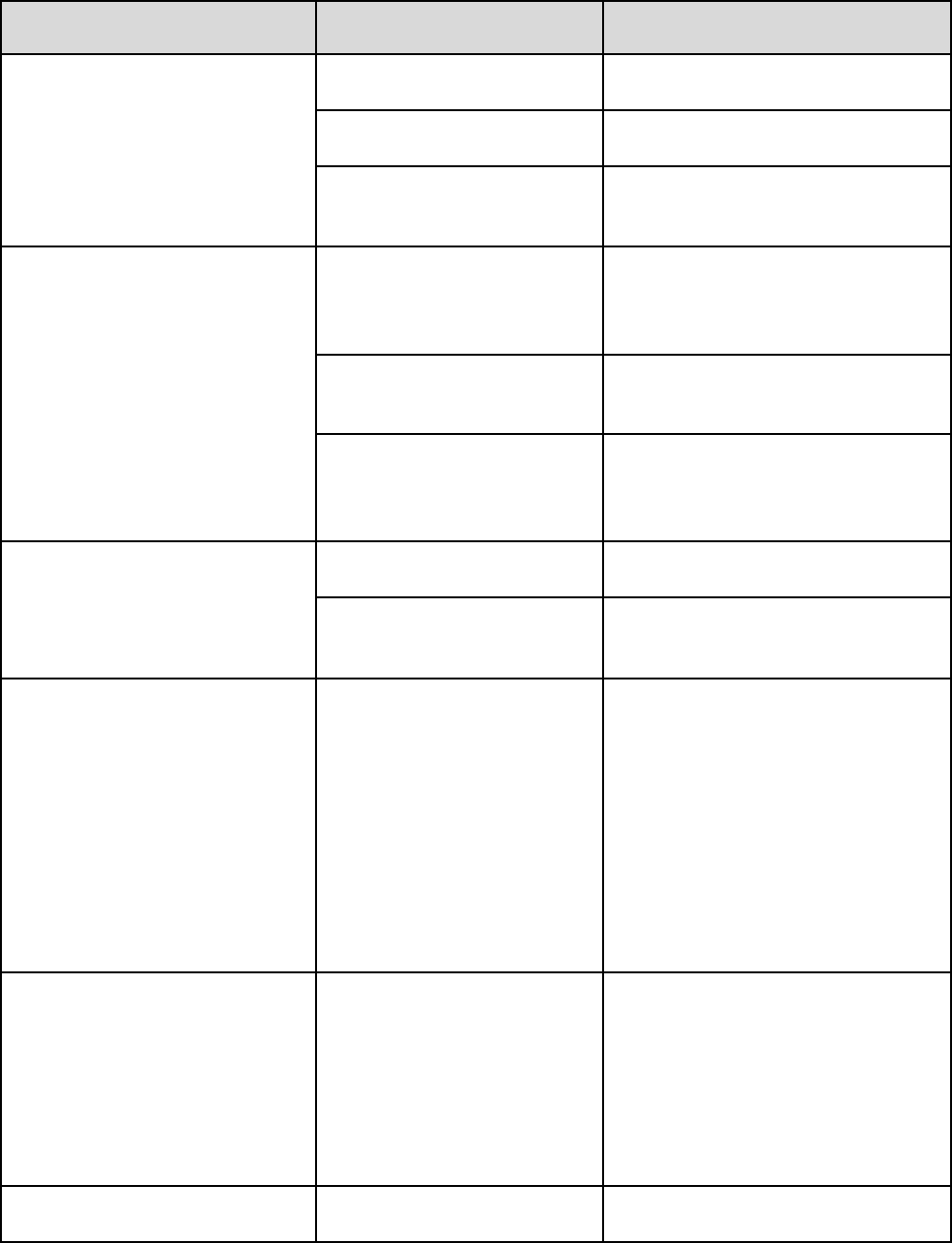
Appendix C
iv
Student Characteristics
Possible Effect on
Test-taking
Possible Accommodations
Emotional/Mental Health
Impairments
Displays test anxiety.
• Extended time
• Breaks during test
Exhibits inappropriate
behavior.
• Separate location
• On-task focusing prompts
Administered medication
that may affect the
student’s physical stamina.
• Test administered during
optimal times when student
is most alert
Health Impairments/Poor
stamina
Unable to sit for extended
lengths of time without
changing position.
• Extended time
• Breaks provided for rest
periods
• Adaptive furniture
Due to fatigue, unable to
complete the test in the
time allotted.
• Multiple day administration
• Separate setting
Increased fatigue as
duration of taking test
increases.
• Use of scribe when fatigue
affects ability to write
• Tests read when fatigue
affects ability to read
Difficulty with reading
Reading skills below grade
level of test.
• Oral reading of tests
• Text-to-speech software
Slow reading pace.
• Extended time
• Present test reading
passages in sections
Hearing Impairments
Unable to access or has
difficulty accessing oral
directions or listening
sections of test in standard
manner.
• Use of sign language
interpreter for oral directions
and listening passages
• Listening passages may be
signed more than once
• Written directions provided
• Extended time
• Separate setting
• Amplification devices
• Preferential seating in front
of interpreter
Difficulty with auditory
processing
Difficulty remembering
and/or understanding oral
directions.
• Repeat directions more than
standard number of times
• Directions simplified
• Provide written directions
• Preferential seating
• Repeat listening section
more than standard number
of times
Difficulty with math
processing/computations
Unable to memorize basic
math facts.
• Use of calculator
• Chart of basic math facts

Appendix D
i
Examples of Testing Accommodations for Special
Populations: Students who are Blind or Visually Impaired
Based on the unique needs of students with blindness and visual impairments, the
following accommodations should be considered when making appropriate
decisions:
Timing/Scheduling
• Multiple day administration
• Extended time* (specify amount of extended time)
• Breaks* (specify length of break and/or any additional conditions under which
breaks may be needed)
*Examples of when extended and/or break times may be needed specific to the needs of
students who are blind or visually impaired to allow for:
• Eye strain or visual fatigue and/or finger fatigue, which leads to numbness and
temporary loss of sensitivity to read braille (a common side effect of reading
braille)
• A reader to describe diagrams or illustrated materials
• The use of other testing accommodations
Setting
• Special lighting
• Individual/small group
• Additional desk or work space (braille readers require extra space on which to
place materials)
Presentation
• Large-type editions of tests
• Braille editions of tests
• Refreshable braille display
• Recording device
• Directions read
• Visual magnification devices and applications
• Closed circuit television (CCTV)
• Tests read (if the student is not yet proficient in or cannot effectively access braille)
• Verbal description or narration provided for visual display materials; charts, graphs,
etc.
Appendix D
ii
• Verbalization of writing (e.g., information that is being presented on a whiteboard
or on an overhead is spoken aloud as it is being written.)
• Text-to-speech software programs for tests read
• Key words or phrases highlighted in directions
• Increased size, shape, space for answers
• Increased spacing
• Decreased number of test items per page
• Markers to maintain place
• Calculation devices/talking calculator
• Abacus
• Tactile graphics
• Manipulatives
• Braille manipulatives
• Verbal description of graphics
• Adapted measuring devices, such as scales, graduated cylinders, braille/large-
print rulers, tactile measuring tools, etc.
• Nonvisual indicators in experiment-like situations (e.g., buzzers for lights)
• Boldface letters and/or white paper for increased contrast
• Digital version of test with screen reader and/or magnification
• Adapted paper (e.g., braille paper, bold-line paper, or raised-line graph paper)
• Reduction of copy work (if an assignment/test requires copying text or problems,
a worksheet is provided in either braille or large print)
Response
• Use of scribe
• Recording devices (for recording answers and note taking)
• Braillewriter or word processor
• Electronic note takers
• Record answers in test booklet
• Assistive technology applications
• Use of adaptive equipment or manipulatives to record answer to a test question
rather than responding in writing (e.g., a student uses a braille model of a clock to
show the answer to a test question.)
Accommodations for Science Laboratory Instruction/Testing
• Accommodations specific to science laboratory instruction/testing (it is especially
important in this context that accommodations provided during testing are
those that have been used during instruction):
o An aide/assistant who can verbally describe specimens seen through a
microscope
o Enlarging slides or pictures through a CCTV, projector, magnifier
Appendix D
iii
o Tactile diagrams/raised line drawings
o Use actual objects for 3D representation
o Directions/procedures read to student
o Braille/large-type directions and procedures
o Assistive technology/adapted materials including (but not limited to):
Devices that transform visual signals into audio output
Talking thermometer/timers
Glassware with embossed numbers
Braille labeling

Appendix E
i
Examples of Testing Accommodations for Special
Populations: Students who are Deaf or Hard of Hearing
Based on the unique needs of students who are deaf or hard of hearing, the
following accommodations should be considered when making decisions:
Timing/Scheduling
• Extended time to allow for use of interpreter for listening section and use of pauses
between passages for note taking
• Breaks
• Multiple day test administration
Setting
• Separate location
• Special seating in close proximity to interpreter
• Special acoustics (e.g., minimal extraneous noises)
• Reduced visual distractions (e.g., glare from lights)
Presentation
• Use of sign language interpreter to sign listening sections of tests
• Auditory amplification devices
• Auditory recording of questions, items, and passages for students with reading
disabilities
• Test passages, questions, item, and multiple-choice responses signed to student
(if the student’s disability also affects his or her ability to decode print)
• Preferential seating
• Test administration directions may be clarified or interpreted if the substance of the
directions is not changed
• Student reads listening script for listening passages
Response
• Sign responses through interpreter for students whose disability affects their ability
to respond in the standard manner
• Auditory amplification
Appendix E
ii
In all instances when an interpreter is used, to the greatest extent possible:
• There should be adequate time prior to the test to allow the interpreter to become
familiar with the passage so he or she is prepared to present the information
appropriately. Principals may open secure State assessments earlier on the day
of administration to allow adequate time.
• Interpreters must be appropriately qualified and trained. Whenever possible, the
“assigned interpreter” should be one with whom the student is familiar and who is
familiar with the student.
• Signs used must not give away nor suggest the correct answer(s) during testing.

Appendix F
i
Recommending and Administering “Tests Read”
The accommodation of “tests read” allows students with disabilities that limit their
ability to decode print the opportunity to demonstrate content knowledge in all subject
areas by mitigating the effects of a reading or print disability. “Tests read” should be a
low-incidence accommodation, as it is not effective or appropriate for many students with
disabilities. Providing read-aloud accommodations for students who do not need them
may have a negative effect on such students’ test performance.
Accommodating students with disabilities through auditory presentation of tests
does not replace high-quality, specially designed reading instruction by appropriately
certified and qualified teachers for such students, nor does it eliminate the need for
schools to conduct ongoing assessments
4
of the individual reading skills of such students,
and provide continued instruction on specific reading skills. Students with disabilities who
are provided the accommodation of “tests read” on the Grades 3-8 ELA Assessments
must still be considered, as appropriate, for academic intervention services (AIS).
Evaluative and instructional information that supports the student’s need for the
accommodation “tests read” may be considered as a part of the multiple measures of
student performance that inform decisions regarding AIS for individual students.
Additional guidance on the use of research-based instructional practices in reading for
students with disabilities may be found in NYSED’s Quality Indicator Review and
Resource Guides for Literacy (http://www.p12.nysed.gov/specialed/techassist/literacyQI-
August2014.pdf).
Providing the “tests read” accommodation on tests primarily assessing reading
comprehension (e.g., the Grades 3-8 ELA Tests or the Reading sections of the
NYSESLAT) may not be appropriate for students with moderate reading disabilities who
may be provided the “tests read” accommodation in other content areas (e.g., social
studies, math, or science). If “tests read” is recommended by a student’s CSE/504
Committee as a testing accommodation for a student with a disability in Grades 3 through
8, the student’s IEP/504 plan must indicate whether it is appropriate to provide this
accommodation on all tests (which would include tests of reading comprehension, such
as the Grades 3-8 ELA Tests or the Reading sections of the NYSESLAT). Recommending
“tests read” on all tests for students in the elementary or intermediate grade levels may
be appropriate when the student’s disability-related issues preclude or severely limit
decoding skills or print access, even with the use of other testing accommodations.
Testing accommodations, including “tests read,” should not be recommended in a test-
specific manner, but should describe the conditions and types of tests for which an
accommodation must or must not be provided. As with all IEP/504 plan
recommendations, testing accommodations must be reviewed at least annually and
revised as necessary to meet the changing needs of each student. It is critical that a
4
For local assessments, screenings, or individual evaluations designed to measure specific reading skills
for the purposes of determining eligibility for services or informing reading instruction, reading such
assessments to students may not yield valid results and may affect the student’s identification for
appropriate services.
Appendix F
ii
student’s testing accommodations are recommended based on current information
related to his or her present levels of performance.
Sample profiles of students with disabilities in the elementary or
intermediate grades that severely limit or preclude the ability to decode
print*:
Sample #1: Amaya is a student with a learning disability. She is in 5
th
grade and has been
consistently receiving research-based, specially designed reading instruction by appropriately
certified and qualified teachers. Although she has made slow progress since kindergarten, as
evidenced by progress monitoring within a Response to Intervention framework and reports on
IEP goals and objectives, recent evaluation results indicate that her decoding and fluency skills
are significantly below average, at more than two standard deviations below the mean. Amaya
prefers to read with the accommodation of color overlays, but even with the use of such
accommodations, classroom reading assessments indicate that her instructional reading level is
consistent with skills shown by students in first grade. However, when provided auditory
accommodations in class, she is able to demonstrate grade-level comprehension and content
knowledge.
Sample #2: Ben is a 3
rd
grade student who is blind. He has been identified as a student with a
disability and is receiving instruction in braille by appropriately trained and qualified teachers.
However, he is not yet proficient in braille, as his blindness resulted from an accident he
experienced over the summer. He requires auditory accommodations in order to participate in
instruction and assessments involving print.
Sample #3: Chava is a 6
th
grade student who has been identified as having a disability due to
“other health impairment.” When she was 9 years old, Chava had a stroke which impaired some
skills related to reading, writing, speech, and language. Her writing skills have improved since her
stroke, but reading and oral word retrieval remain significant challenges. Chava receives
research-based, specially designed reading instruction by appropriately certified and qualified
teachers, as well as related services. She has made progress in functional reading skills;
however, her decoding skills are still significantly below average, as evidenced by recent
evaluation results. Although evaluation results show that her auditory comprehension is slightly
below average, auditory accommodations in class allow her to meaningfully participate and
progress in grade-level activities and assessments involving text.
*The profiles above are fictional. Any resemblance to actual persons or events is purely coincidental.
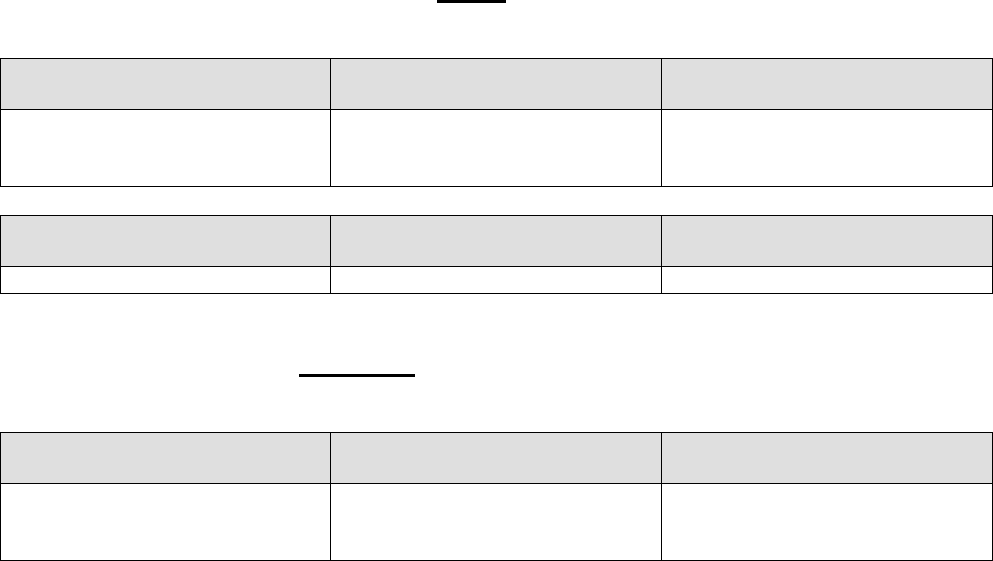
Appendix F
iii
SAMPLE DOCUMENTATION
Testing conditions appropriate for a student with a disability that severely limits or
precludes the ability to decode print who would receive the “tests read” accommodation
on the Grades 3-8 ELA Assessments or Reading Section of the NYSESLAT:
Testing Accommodations
Testing Conditions
Implementation
Specifications
Tests Read
For all State and local tests,
including tests of reading
comprehension
Text-to-speech software may
be used to provide this
accommodation
Testing Accommodations
Testing Conditions
Implementation
Specifications
Tests Read
For all State and local tests
Human reader
Testing conditions appropriate for a student with a disability that moderately impacts the
ability to decode print who would not receive the “tests read” accommodation on the
Grades 3-8 ELA Assessments or Reading Section of the NYSESLAT:
Testing Accommodations
Testing Conditions
Implementation
Specifications
Tests Read
For all State and local tests,
except tests of reading
comprehension
Text-to-speech software may
be used to provide this
accommodation
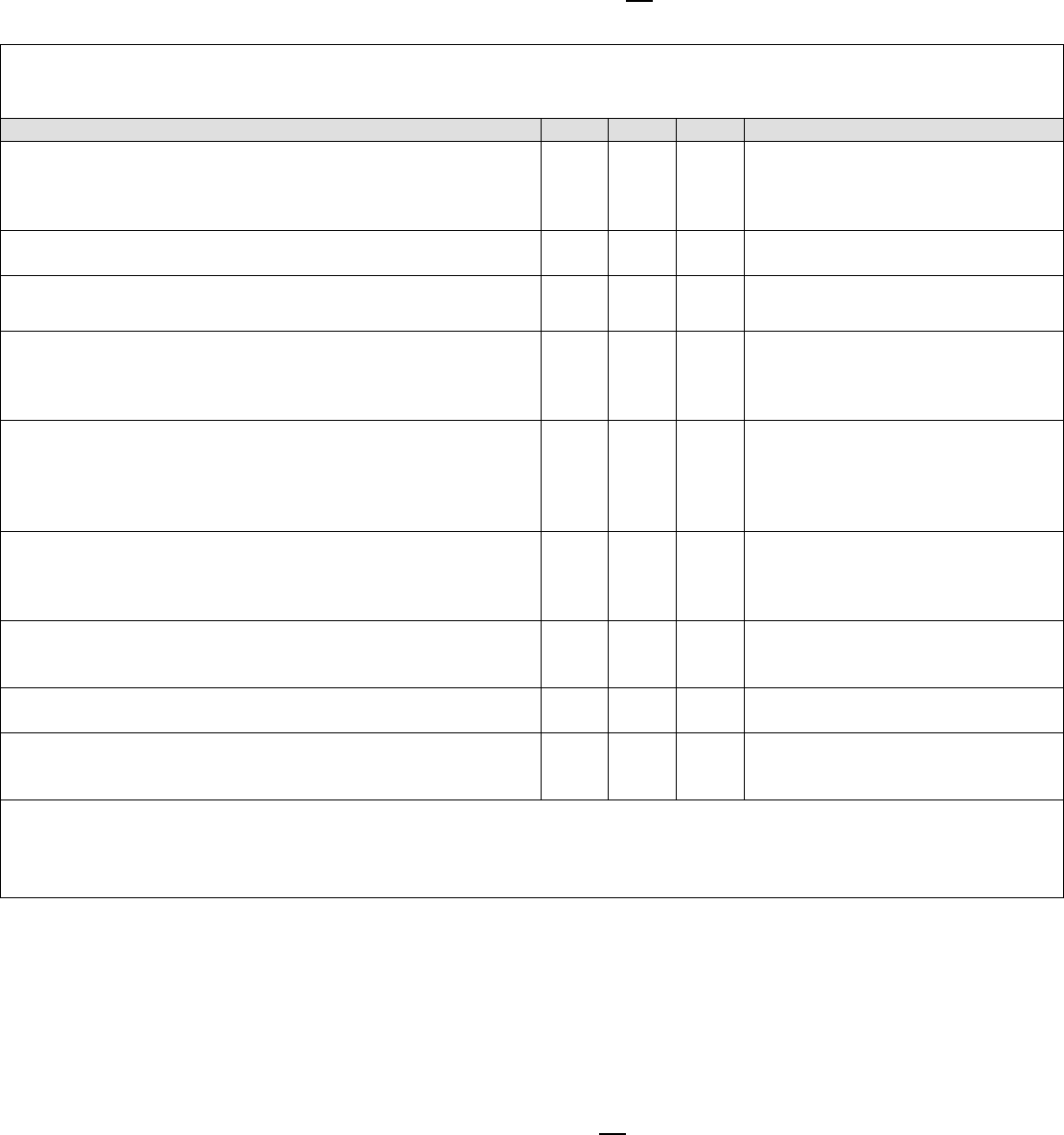
Appendix F
iv
Testing Accommodation Decision-Making Tool for “Tests Read”
The chart below may be used by school personnel to facilitate collaborative decision-making related to the recommendation of “tests read”
(via human reader or technology) as a testing accommodation for students with disabilities in grades 3 through 8. The questions in this
tool should be considered each time a student’s individualized education program (IEP) or Section 504 Accommodations Plan (504 plan)
is reviewed to determine the appropriateness of this accommodation. After completing the chart, check the box below indicating the
recommended testing accommodation for the Committee on Special Education (CSE) or Section 504 Committee to review and consider
when developing the student’s IEP/504 plan. This tool is for local use, only. Do not submit this form to the New York State Education
Department (NYSED).
Student: Date:
Persons Involved in Decision-Making:
Questions
YES
NO
N/A
Comments/Evidence
Is there evaluative information indicating that, even after
explicit and systematic reading instruction, the student’s
disability precludes or severely limits the student’s ability
to decode print?
☐ ☐ ☐
Has the student been provided systematic, explicit, research-
based reading intervention(s) to improve decoding skills?
☐ ☐ ☐
If the student is blind or visually impaired, is he or she
learning to read braille?
☐ ☐ ☐
If the student is blind or visually impaired, has it been
determined that his or her disability precludes or severely
limits the ability to access and/or develop proficiency in
braille?
☐ ☐ ☐
If the student is deaf or hard of hearing, is there evidence
demonstrating that the student’s disability precludes or
severely limits his or her ability to decode printed text
(possibly due to other co-occurring disabilities or long-term
language deprivation in early childhood)?*
☐ ☐ ☐
Is there evidence that the student’s access to and/or
performance on print-based tasks improves when
information is presented to the student in auditory formats
(by way of human reader or the use of assistive technology)?
☐ ☐ ☐
Does the student use read-aloud accommodations during
instruction and/or classroom testing (by way of human reader
or the use of assistive technology)?
☐ ☐ ☐
Is the student provided instructional materials in auditory
formats?
☐ ☐ ☐
Has the student provided input to inform specific
recommendations related to the “tests read” testing
accommodation?
☐ ☐ ☐
Are there additional considerations for recommending “tests read” for this student, specific to his or her unique disability-
related needs? If so, explain in the space below:
*If the answer to this question is “YES”, and the student also understands sign language, the CSE may consider recommending a sign
language interpreter to translate text if appropriate to the needs and skills of the student.
Check the recommendation that is most appropriate in meeting the needs of this student:
☐ “Tests read” is not an appropriate testing accommodation for this student.**
☐ “Tests read” should be recommended for this student on State and local tests, except tests of reading comprehension.**
☐ “Tests read” should be recommended for this student on all State and local tests, including tests of reading
comprehension.
**These recommendations indicate that the Grades 3-8 ELA Assessments will not be read to the student.

Appendix F
v
Procedures for Administering “Tests Read” on State Assessments
The testing accommodation of “tests read” may be provided to students with
disabilities by way of human reader or technology. When a proctor is reading State
assessments and examinations aloud to a student(s), the test must be read in a neutral
manner, without intonation or emphasis, and without otherwise drawing attention to key
words or phrases. Passages and questions must be read word for word, without any
clarification or explanation. If the stem of the question and/or the answer choices make
reference to part of a reading passage solely as line numbers or paragraph numbers, the
reader should re-read the specified part(s) of the passage to the student. The principal
should provide the test proctor with an exam booklet no earlier than one hour in advance
of the required starting time, so that the proctor can become familiar with the exam before
reading it aloud to the student. When reading a mathematics test question to a student
who has this accommodation, all numbers and mathematics symbols, along with words,
should be spoken by the proctor to the student. For example, the symbol < should be
read as “less than,” and 1,211 should be read as “one thousand, two hundred, eleven.”
Please refer to the guide provided in the next section on reading mathematics symbols to
students.
State assessments provided through computer-based testing have text-to-speech
capabilities embedded in the testing platform. If a student’s IEP/504 plan specifies “text-
to-speech” as a testing accommodation (or an implementation specification for the “tests
read” accommodation), the testing coordinator for that school must be contacted to
activate this feature for that student. In situations where a paper copy of a State
assessment must be scanned onto a school-sanctioned device, in order to be provided
this accommodation in accordance with specifications in an IEP/504 plan, this
accommodation would be considered “revised format.” For State assessments, any
reproduction and/or reformatting of test booklets requires the advance written permission
of the Office of State Assessment. A request to open the test earlier to make these
changes needs to be submitted to the Office of State Assessment. The request must be
submitted by the principal and must indicate that, based on the student’s IEP/504 plan,
permission is needed to revise the format. Such requests may be faxed to the Office of
State Assessment at 518-474-1989.
Audio playback devices may also be used to provide read-aloud testing
accommodations for students with disabilities in accordance with the specifications in the
IEP/504 plan. In this manner of implementation, a student would listen to the test being
read through an audio playback device, rather than through human reader or text-to-
speech software. This would require an exam proctor to read the exam in its entirety,
following the above procedures, just prior to the administration of the exam. If the testing
accommodation is to be provided in this manner, and the proctor will not be able to
prepare the recording within one hour of the starting time for the exam, the school must
request written permission from the Office of State Assessment to open the exam early
in order to provide this accommodation. These requests must be submitted by the
principal via fax to 518-474-1989. Under no circumstances, however, is it permissible for
State tests to be opened prior to the date of general administration. The device used for
audio playback must be a school-sanctioned device, and the proctor’s recording must be
deleted after the student has submitted his or her exam materials.
Appendix F
vi
Any other features that a text-to-speech software program or audio playback
device might have that would provide the student with information or assistance not
permitted on State assessments (such as a dictionary, thesaurus, or website) must be
disabled if the program is to be used for State assessments.
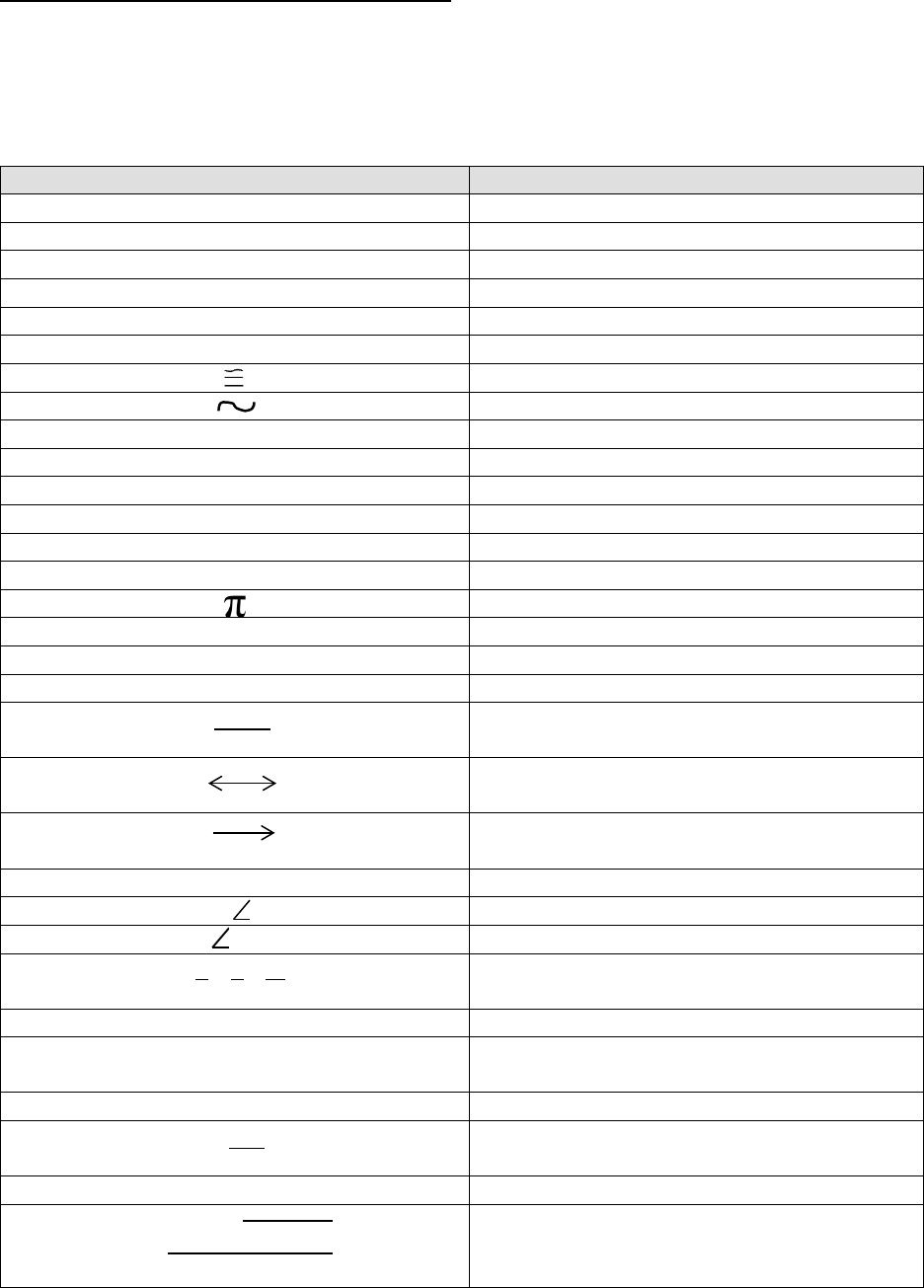
Appendix F
vii
Guide to Reading Mathematics Symbols
When providing the testing accommodation of “tests read” to students taking a
mathematics test, math symbols should be read by the appropriate name. If a student is
provided “tests read” on math tests through the use of text-to-speech software, the
program should be able to “read” math symbols correctly. The following chart, although
not exhaustive, may be used as a guide to reading math symbols.
Math Symbol
Name
+
plus, positive
-
minus, negative
x
times (or a variable “x”)
÷ or /
divided by
=
equals, is equal to
≠
is not equal to
is congruent to
is similar to
∞
infinity
<
is less than
>
is greater than
≤
is less than or equal to
≥
is greater than or equal to
≈
is approximately equal to
Pi
±
plus or minus
ǁ
is parallel to
┴
is perpendicular to
AB
line segment AB
AB
line AB
AB
ray AB
√
the square root of
angle
m BAC
measure of angle BAC
1 3 1
2, 4, 16
one half, three fourths, one sixteenth
1,203
one thousand two hundred three
(21 x 3) ÷ ___ = 7
The quantity, twenty-one times three,
divided by blank, equals seven.
7.234
seven point two three four
0.36
zero point three six repeating
10³
ten cubed OR ten to the third power
=
− ± √
2
− 4
2
“’X’ equals negative ‘b’ plus or minus the
square root of ‘b’ squared minus 4 ‘a’ ‘c’
divided by 2 ‘a’”

Appendix G
i
Procedures for the Use of a Scribe
Testing accommodations allowing the use of a scribe may be recommended for
students who, because of a disability, need someone to transcribe their dictated
responses on tests. Implementing this accommodation generally necessitates the use of
an alternate location and extended time. These additional accommodations must also be
specified in the IEP/504 plan to be provided. If "extended time" and "separate location"
are needed only when the use of a scribe or a recording device is required, that must be
indicated so that the accommodations are not provided during other times when not
appropriate. Scribes may be teachers, teacher aides, teacher assistants, or other school
personnel who are appropriately prepared to provide this accommodation. Scribes must
have an understanding of how to record responses using the procedures described and
be familiar with the test, including knowledge of the vocabulary used in the test.
The following procedures must be used to implement the testing accommodation
"use of scribe.” Generally, the student is expected to provide any punctuation beyond
what is needed at the end of a sentence, as well as paragraphing, and capitalization of
proper nouns.
5
• When “use of a scribe” is indicated as a testing accommodation on an IEP/504
plan, the student may dictate responses directly to the scribe or into a recording
device, which may be played back by a scribe for transcription. If a recording
device is recommended to implement this testing accommodation, this should
be indicated accordingly as an implementation specification in the student’s
IEP/504 plan.
• Scribes must record word-for-word what the student dictates or records.
Scribes may capitalize the first letter of each sentence and provide punctuation
at the end of a sentence. Scribes must leave out additional punctuation (e.g.,
commas or quotation marks) and capitalization of proper nouns. Students do
not have to spell words aloud while dictating to a scribe.
• A word processor may be used by a scribe to type a student’s dictation, and
scribes should write/type a student’s dictation on every other line.
• When the student’s dictation is complete, the scribe shows the student the
written response and asks him or her to indicate where capitalization of proper
nouns, additional punctuation, and paragraphing should be used.
5
Generally, for the Grades 3-8 ELA Assessments, waiving spelling, capitalization, punctuation and/or
paragraphing requirements is not permitted. However, students participating in the Grades 3-8 ELA
Assessments who are blind and require the use of a scribe do not need to provide capitalization,
punctuation, and/or paragraphing when following the procedures to use this accommodation. For this
specific population of students, the scribe may provide these areas of written mechanics and formatting.
Appendix G
ii
• The student reads the completed dictation/transcription and indicates if there
are any further changes to be scribed on the skipped lines.
• The scribe must then transfer the student’s completed responses into the paper
test booklet, and staple the student’s dictation to the paper test booklet. If the
student is participating in CBT, the student’s transcribed responses would need
to be entered into the CBT platform to submit.
The following procedures may be used to implement the use of a scribe as a testing
accommodation specific to the administration of mathematics tests:
• Scribes must record what the student dictates on a separate sheet of paper.
• The scribe should ask the student to indicate exactly where the numbers need
to be placed and lined up.
• The scribe must record the operational sign as dictated by the student (addition
sign, subtraction sign, etc.).
• When dictating numbers, the student must indicate how the number is written
and indicate place value. For example, if the student says one thousand thirty-
eight, the student should specify how that is written: one, zero, three, eight.
• When computing a problem, the student must indicate to the scribe how he/she
is computing and should be specific in terms of what numbers to write down,
including carrying. For example, when adding 23 and 9, the student should
indicate 9 plus 3 is 12, put down the 2 and carry the one above the 2.
• The scribe shows the student the written response and asks him or her to
indicate if there are any further changes to be made.
• The student does not have to provide spelling and punctuation in word
responses.
• The scribe must transfer the student's completed responses into the test
booklet and staple the student's dictation to the test booklet.

Appendix H
i
Procedures for Multiple Day Administration of
State Assessments
Considerations for Multiple Day Test Administration
Multiple day test administration is a testing accommodation designed to permit
students who, because of their disability-related needs, are unable to complete a State
assessment
6
in a single day or testing session. The determination of a student’s eligibility
for this testing accommodation must be made, and reviewed annually, by a student’s CSE
or Section 504 Committee on a case-by-case basis in consideration of the student’s
unique educational needs (e.g., the student experiences fatigue due to health issues).
It is also appropriate to consider this testing accommodation for a student with a
disability who has extended time as a testing accommodation in his/her IEP or 504 plan
when the student is scheduled to take more than one State assessment in a single day.
This recommendation must be made in consideration of the State assessment schedule
for the year the student’s IEP or 504 plan will be in effect.
Documentation of Multiple Day Test Administration in the IEP or 504
plan – Step I
The CSE/Section 504 Committees are the only entities that may determine that a
student needs administration of a State assessment over multiple days. If the
CSE/Section 504 Committee recommends multiple day testing, it must be documented
under the “Testing Accommodations” section of the student’s IEP or the appropriate
section of the student’s 504 plan (e.g., “test administration over multiple days” or “multiple
day test administration”). It may also be appropriate to indicate the conditions or types of
assessments that require this accommodation. For example: a student with a seizure
disorder may need multiple day test administration in the event he or she experiences a
seizure on the day of the test; or a student who receives extended time may need this
accommodation for State assessments whose standard administration time is longer than
two hours.
Requesting Authorization to Administer State Assessments over Multiple
Days – Step II
Prior to the administration of the State assessment to which this accommodation
will be applied, the chief school officer (or their designee) must complete and submit an
Assurance of Multiple Day Administration of State Assessments form for each student in
the school whom the CSE/Section 504 Committee recommends for multiple day
administration on State assessments consistent with the student’s IEP or 504 plan during
the school year. The chief school officer (or their designee) must also certify in this
6
The term “State assessment”, as used throughout Appendix H, refers to all State assessments and
examinations at the elementary, intermediate, and secondary levels.

Appendix H
ii
Assurance form that the school will comply with procedures governing the administration
of State assessments over multiple days.
All completed Assurance of Multiple Day Administration of State
Assessments forms must be e-mailed to the Office of State Assessment (OSA) at
MultipleDayTe[email protected] no later than the day before the administration of
the affected State assessment. Please include “Multiple Day Administration,” followed
by the school’s BEDS Code (e.g., Multiple Day Administration – 010002345678) in the
subject line. The chief school officer (or their designee) will receive a confirmation e-mail
that the form was submitted. If the school has e-mailed the Assurance form by the
deadline, the school may provide the multiple day testing accommodation to the named
students.
A copy of each completed Assurance form must be retained by the school for the
purposes of data collection and/or monitoring. This Assurance form for multiple day
administrations will apply to all subsequent State assessments for that student
administered in that school without the submission of additional Assurance forms to OSA.
If the student’s current school submitted an Assurance form for multiple day
administrations under the previous procedure, the school is not required to submit
additional Assurance forms to OSA either. However, if a student for whom a school was
authorized to administer State assessments over multiple days transfers to another
school, the student’s new school would need to submit an Assurance of Multiple Day
Administration of State Assessments form if the student is recommended for multiple day
testing in accordance with their IEP or 504 plan.
Additionally, schools must ensure that the Multiple Day Administration Security
Certificate for Chief School Officers (Or Their Designees) and the Multiple Day
Administration Security Certificate for Parents/Guardians are completed and signed by
the chief school officer (or their designee) and the student’s parent/guardian, respectively,
for each student receiving multiple day testing. These certificates must be completed for
each administration period in which the student is receiving this accommodation. (The
certificate that is ordinarily signed by the parent or guardian may instead be signed by the
student if the student is eighteen years of age or older.) The examination that was
completed on the second day will not be valid until the school has filed the two signed,
security certificates in the student’s education record. The signed security certificates
must be retained as part of the student’s cumulative education record after each test
administration period for the purposes of data collection and/or monitoring. Security
certificates are not submitted to OSA.
Procedures Relating to the Administration of State Assessments over
Multiple Days
The following are important considerations and procedures associated with
administration of State assessments over multiple days:
• Each secondary-level examination must begin on the date scheduled by the Office
of State Assessment for its general administration. At the elementary and

Appendix H
iii
intermediate levels, the assessment must begin on a day within the approved
testing window, as determined by NYSED, for the assessment of the same title for
all other students. In the event the student has more than one State assessment
scheduled on the same day, all State assessments must begin on that day.
• Students must receive the amount of extended time indicated in their IEP/504 plan
to complete the examination or section(s) administered during a given day.
• Just prior to beginning a multiple day administration of State assessments, the
school must separate the examination into clearly defined sections or parts.
NYSED does not define the size or contents of test sections for the purposes of
multiple day test administration. Decisions on how to separate tests for a student
receiving multiple day testing are made locally in accordance with the individual
needs of the student.
• Students may be given individual sections to complete one at a time and may be
permitted to start additional sections only if they are expected to complete all
of those sections on that day. This ensures that there will be no advance
knowledge of upcoming sections and content of the assessment not completed on
a single day.
• Students who do not complete a section of the test on the day it is started are not
permitted to complete that section on the following day. (Students may be given
a photocopy of previous sections they have completed, provided that these
sections are part of what is ordinarily completed by students in one session, so
that they have access to information in these sections, but no changes may be
made to student responses provided on any section started on an earlier day.
Additionally, any portion of the test that a student has not completed may not be
photocopied). If photocopied test sections were provided to the student as
described above, all photocopies must be attached to the student’s completed test
and submitted with all required testing materials.
• On subsequent examination days, the student will be given additional sections to
complete. These sections must be provided one at a time.
• In accordance with NYSED policy and Education Law, the principal is responsible
for the secure handling, storage, and administration of all State assessment
materials, including overnight storage. Policies governing these aspects of test
administration are provided in all elementary-, intermediate- and high school-level
School Administrator’s Manuals (http://www.nysed.gov/state-assessment/test-
manuals).

Appendix H
iv
New York State Education Department
Assurance of Multiple Day Administration of State Assessments
INSTRUCTIONS
Use the following Assurance of Multiple Day Administration of State Assessments
form for each student in the school district who will receive multiple day administration of
State assessments consistent with the student’s IEP or 504 plan. Completed Assurance
of Multiple Day Administration of State Assessments forms must be e-mailed to the Office
of State Assessment (OSA) at MultipleDayTesting@nysed.gov no later than the day
before the administration of the affected State assessment. Please include “Multiple Day
Administration,” followed by the school’s BEDS Code (e.g., Multiple Day Administration –
010002345678) in the subject line. The chief school officer (or their designee) will receive
a confirmation e-mail that the form was submitted. If the school has e-mailed the
Assurance form by the deadline, the school may provide the multiple day testing
accommodation to the named students.
A copy of each completed Assurance form must be retained by the school for the
purposes of data collection and/or monitoring. This Assurance form for multiple day
administrations will apply to all subsequent State assessments for that student,
administered in that school, without the submission of additional Assurance forms to OSA.
If the student’s current school submitted an Assurance form for multiple day
administrations under the previous procedure, the school is not required to submit
additional Assurance forms to OSA either. However, if a student for whom a school was
authorized to administer State assessments over multiple days transfers to another
school, the student’s new school would need to submit an Assurance of Multiple Day
Administration of State Assessments form if the student is recommended for multiple day
testing in accordance with their IEP or 504 plan.
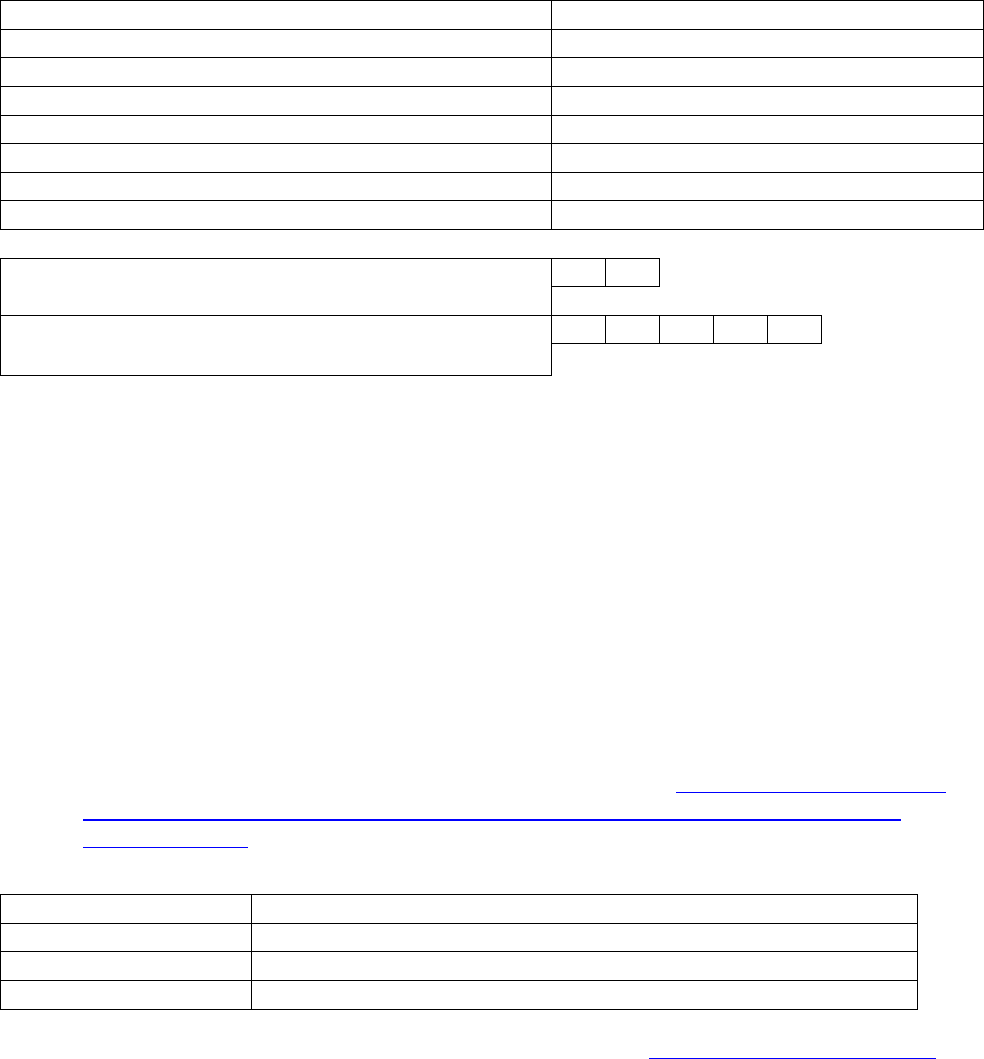
New York State Education Department
Assurance of Multiple Day Administration of State Assessments
School BEDS Code
School Name
School Street Address
School City
School Zip Code
Name of Chief School Officer (Or their Designee)
E-mail Address
Phone Number
Student’s First and Last Name Initials
(Schools must keep student’s full name on file.)
Last Five Digits of Student’s New York State
Student Identification System (NYSSIS) ID #
(Input last five digits only)
Assurance of Multiple Day Administration of State Assessments:
As the chief school officer (or their designee) of School,
I hereby certify that the information contained in this notification for the student identified
above is correct and make the following assurances:
• The Committee on Special Education (CSE) or Section 504 Committee
determined that, based on a student’s unique educational needs, the student
requires multiple day administration of State assessments and documented this
testing accommodation in the student’s current individualized education
program/Section 504 accommodation plan, and
• The school will comply with the procedures governing the administration of State
assessments over multiple days as detailed in Appendix H: Administering Tests
Over Multiple Days of the Office of Special Education’s Testing Accommodations
for Students with Disabilities: Policy and Tools to Guide Decision Making and
Implementation (https://www.nysed.gov/special-education/testing-
accommodations-students-disabilities-policy-and-tools-guide).
Signature
Type Name
Type Title
Date
Please e-mail the completed form to the Office of State Assessment at MultipleDayTes[email protected]ov.
Be sure to include “Multiple Day Administration” followed by the school’s BEDS Code
(e.g., Multiple Day Administration – 010002345678) in the subject line of the e-mail and
to retain the form in the school’s files.
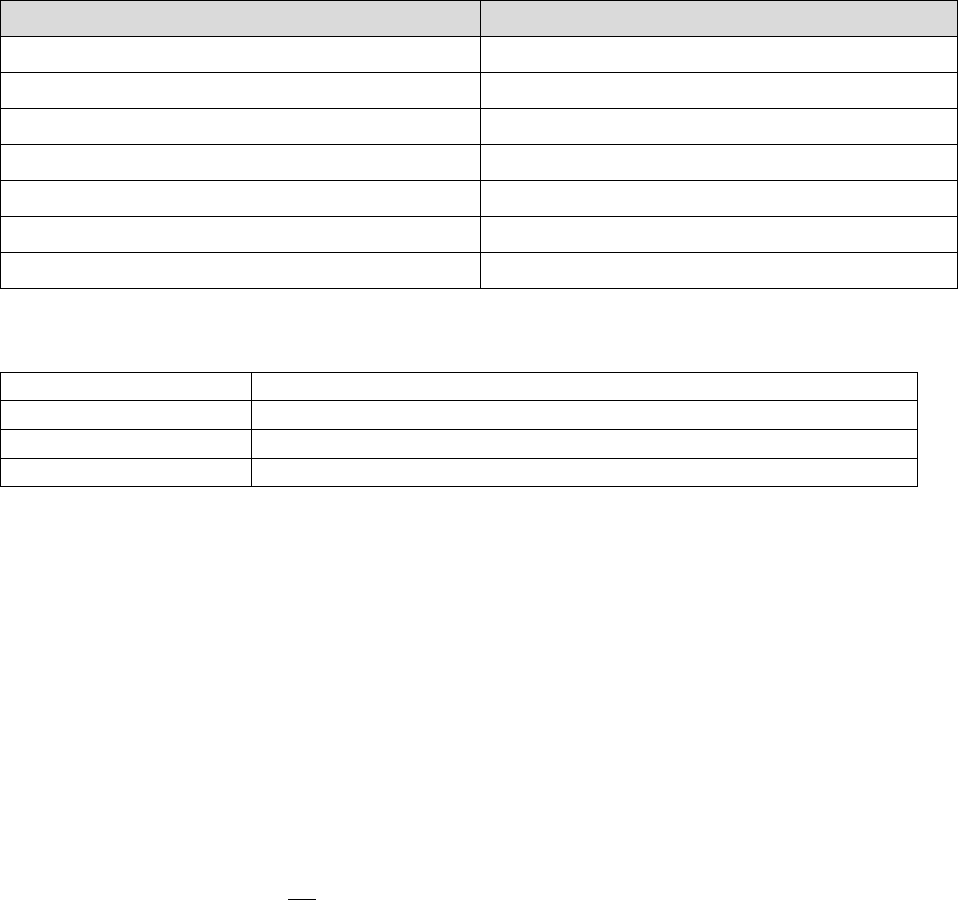
New York State Education Department
Multiple Day Administration Security Certificate
for Chief School Officers (Or Their Designees)
I, , as the chief school officer (or their designee) of
School, do certify that was
not given access by me or any proctors to any of the questions on the following
assessments prior to the dates administered.
Multiple Day Administration of State Assessments:
Assessment(s)
Dates Administered
Signature
Type Name
Type Title
Date
T
his form must be retained as part of the student’s cumulative education record.
It is not e-mailed to the Office of State Assessment.
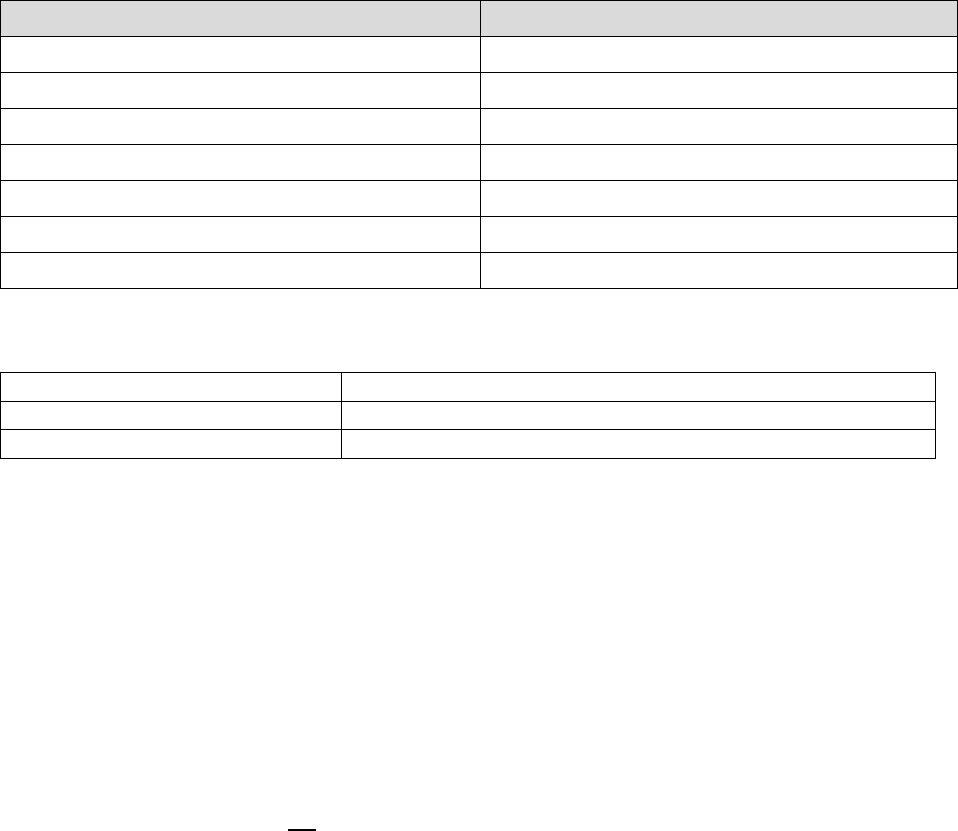
New York State Education Department
Multiple Day Administration Security Certificate
for Parents/Guardians
I, , as the parent/guardian of who
attends School, do certify that
was not given access by me to any of the questions on the following assessments prior
to the dates administered and was informed not to discuss any aspects of the test with
fellow students until testing was completed.
Multiple Day Administration of State Assessments:
Assessment(s)
Dates Administered
Parent/Guardian’s Signature*
Type Name
Date
* This form may instead be signed by the student if the student is eighteen years of age or older.
This form must be retained as part of the student’s cumulative education record.
It is not e-mailed to the Office of State Assessment.

Appendix I
i
Sample Student Accommodation Refusal Form
This form is optional and for local use, only. Do not submit to the New York State
Education Department. This form may be modified and duplicated for local use.
Directions: Complete this form in the event that a student refuses a testing accommodation(s)
during testing. This form may be retained and filed in accordance with local policy.
Student’s Name: ____________________________________________ Grade: ________
School Name: _____________________________________________________________
School District: ____________________________________________________________
Assessment: _____________________________ Date of Assessment: ______________
Teacher/Test Administrator: _________________________________________________
Accommodation(s) Refused:
__________________________________________________________________________
__________________________________________________________________________
Reason for Refusal:
__________________________________________________________________________
__________________________________________________________________________
Additional Comments:
__________________________________________________________________________
__________________________________________________________________________
__________________________________________________________________________
Signature of Teacher/Test Administrator: _______________________________________
Date: _____________
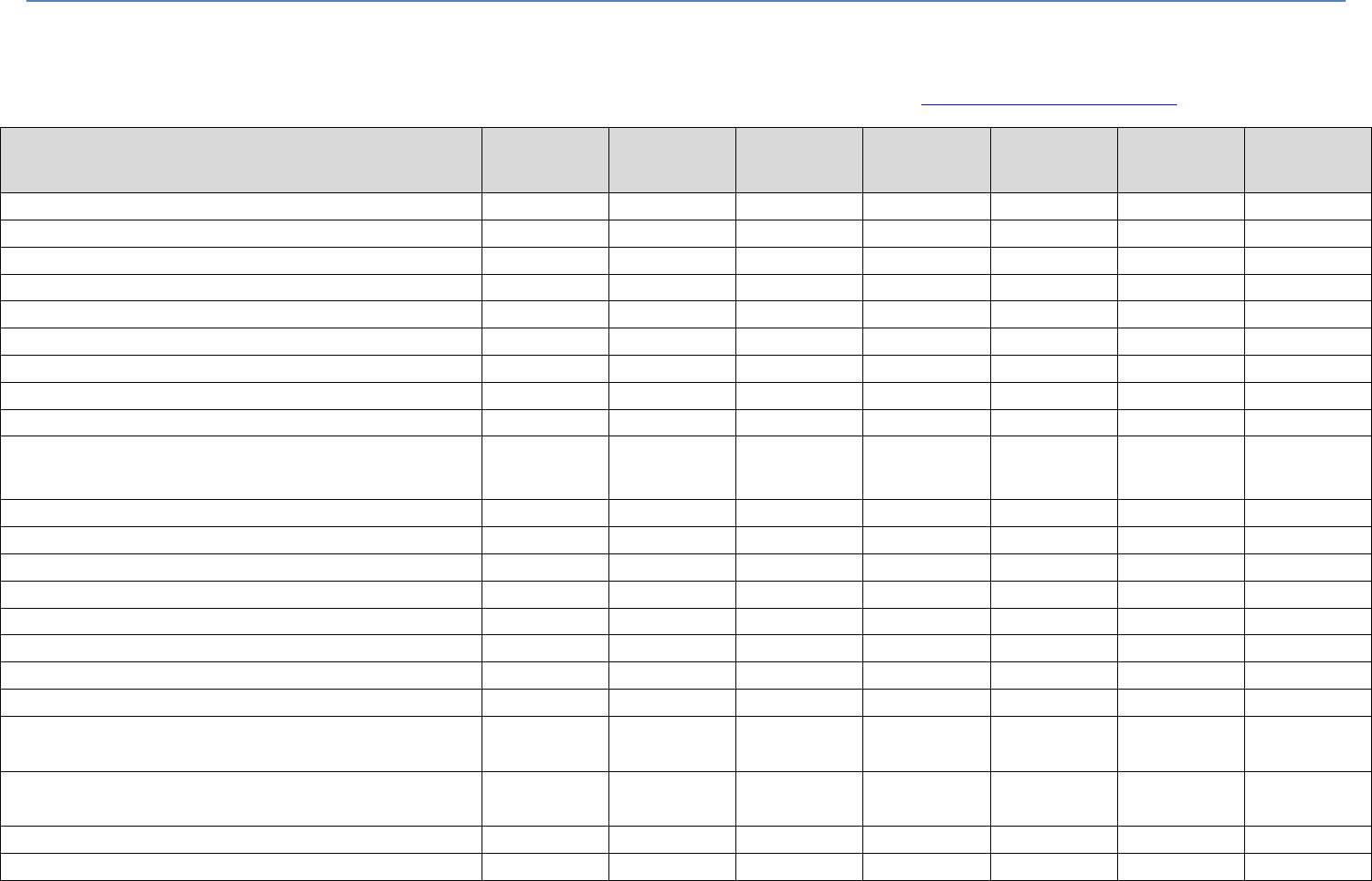
Appendix J
i
Allowable Testing Accommodations Across New York State’s Testing Programs
This chart was developed as a general reference tool on whether specific testing accommodations are permissible on NYS tests. Testing accommodations that are
allowed for use with students with disabilities on certain NYS tests are indicated with “Y” (YES); testing accommodations that are not allowed for use with students
with disabilities on certain NYS tests are indicated with “N” (NO). Numbers used in the chart reflect specific grade levels which apply to the accommodation indicated.
Please be advised that the list of testing accommodations included in this chart is not exhaustive. Additional information on the permissibility of specific testing
accommodations is included in the School Administrator’s Manual for each NYS test noted in the chart below. School Administrator’s Manuals
are available on the
Office of State Assessment’s webpage (http://www.nysed.gov/state-assessment/test-manuals).
Testing Accommodation
3-8 ELA
3-8 Math
4 & 8
Science
Regents
NYSAA
NYSESLAT
NYSITELL
Directions read more than standard number of times
Y
Y
Y
Y
Y
Y
Y
Directions simplified
Y
Y
Y
Y
Y
Y
Y
Key words in directions highlighted (student/adult)
Y
Y
Y
Y
Y
Y
Y
Student highlights key words in questions
Y
Y
Y
Y
Y
Y
Y
Adult highlights key words in questions
N
N
N
N
N
N
N
Present test in smaller segments/sections*
Y
Y
Y
Y
Y
Y
Y
Tests read aloud (human reader)
Y
Y
Y
Y
Y
Y
Y
Text-to-speech*
Y
Y
Y
Y
Y
Y
Y
Student reads tests aloud to self
Y
Y
Y
Y
Y
Y
Y
Student reads the “listening script” for listening passages
(for deaf/hard-of-hearing students who are not proficient
in sign language)
n/a
n/a
n/a
n/a
n/a
Y
Y
Use of reading “window”/guide to maintain place
Y
Y
Y
Y
Y
Y
Y
Use of magnification device
Y
Y
Y
Y
Y
Y
Y
Use of interactive whiteboard*
Y
Y
Y
Y
Y
Y
Y
Change print color/color contrast on paper test*
Y
Y
Y
Y
Y
Y
Y
Change print color/color contrast on computer-based tests
Y
Y
Y
Y
Y
Y
Y
Enlarged print**
Y
Y
Y
Y
Y
Y
Y
Reduce number of items per page
Y
Y
Y
Y
Y
Y
Y
Braille**
Y
Y
Y
Y
Y
Y
Y
Use of calculator
n/a
N (Grades 3-5),
N (Session 1,
Grade 6)
Y
Y
Y
n/a
n/a
Use of mathematics tables
n/a
N (Grades 3-5),
N (Session 1,
Grade 6)
Y
Y
Y
n/a
n/a
Use of number line
n/a
Y
Y
Y
Y
n/a
n/a
Abacus
n/a
Y
Y
Y
Y
n/a
n/a

Appendix J
ii
Testing Accommodation
3-8 ELA
3-8 Math
4 & 8
Science
Regents
NYSAA
NYSESLAT
NYSITELL
Scribe
Y
Y
Y
Y
Y
Y
Y
Speech-to-text
Y
Y
Y
Y
Y
Y
Y
Record answers directly in test book
Y
Y
Y
Y
Y
Y
Y
Word processor (typed responses)
Y
Y
Y
Y
Y
Y
Y
Verbally record responses in recording device
Y
Y
Y
Y
Y
Y
Y
Spell check device/software
Y
Y
Y
Y
Y
Y
Y
Grammar check
N
Y
Y
Y
Y
Y
Y
Extra paper
Y
Y
Y
Y
Y
Y
Y
Enlarged graph paper
Y
Y
Y
Y
Y
Y
Y
Adapted keyboard
Y
Y
Y
Y
Y
Y
Y
Adapted mouse
Y
Y
Y
Y
Y
Y
Y
Switch interface
Y
Y
Y
Y
Y
Y
Y
Touch screen
Y
Y
Y
Y
Y
Y
Y
Keyboard access features (e.g., “sticky keys,” “filter keys”)
Y
Y
Y
Y
Y
Y
Y
Word prediction software
Y
Y
Y
Y
Y
Y
Y
Extended Time
Y
Y
Y
Y
Y
Y
Y
Breaks
Y
Y
Y
Y
Y
Y
Y
Administration of tests over multiple days†
Y
Y
Y
Y
Y
Y
Y
Test sessions not to exceed a certain length of time
Y
Y
Y
Y
Y
Y
Y
Separate location/setting (specify group, individual, and/or
additional requirements)
Y
Y
Y
Y
Y
Y
Y
Redirection/refocusing
Y
Y
Y
Y
Y
Y
Y
Specialized seating
Y
Y
Y
Y
Y
Y
Y
Special lighting
Y
Y
Y
Y
Y
Y
Y
* Requires the advance written permission of the Office of State Assessment to reformat the test to implement this testing accommodation.
** Braille and large-type test booklets are available for all assessments and exams and may be requested through the online examination request system.
† Requires that specific documentation is submitted to the Department. Please refer to Appendix H: Procedures for Multiple Day Administration of State Assessments.

